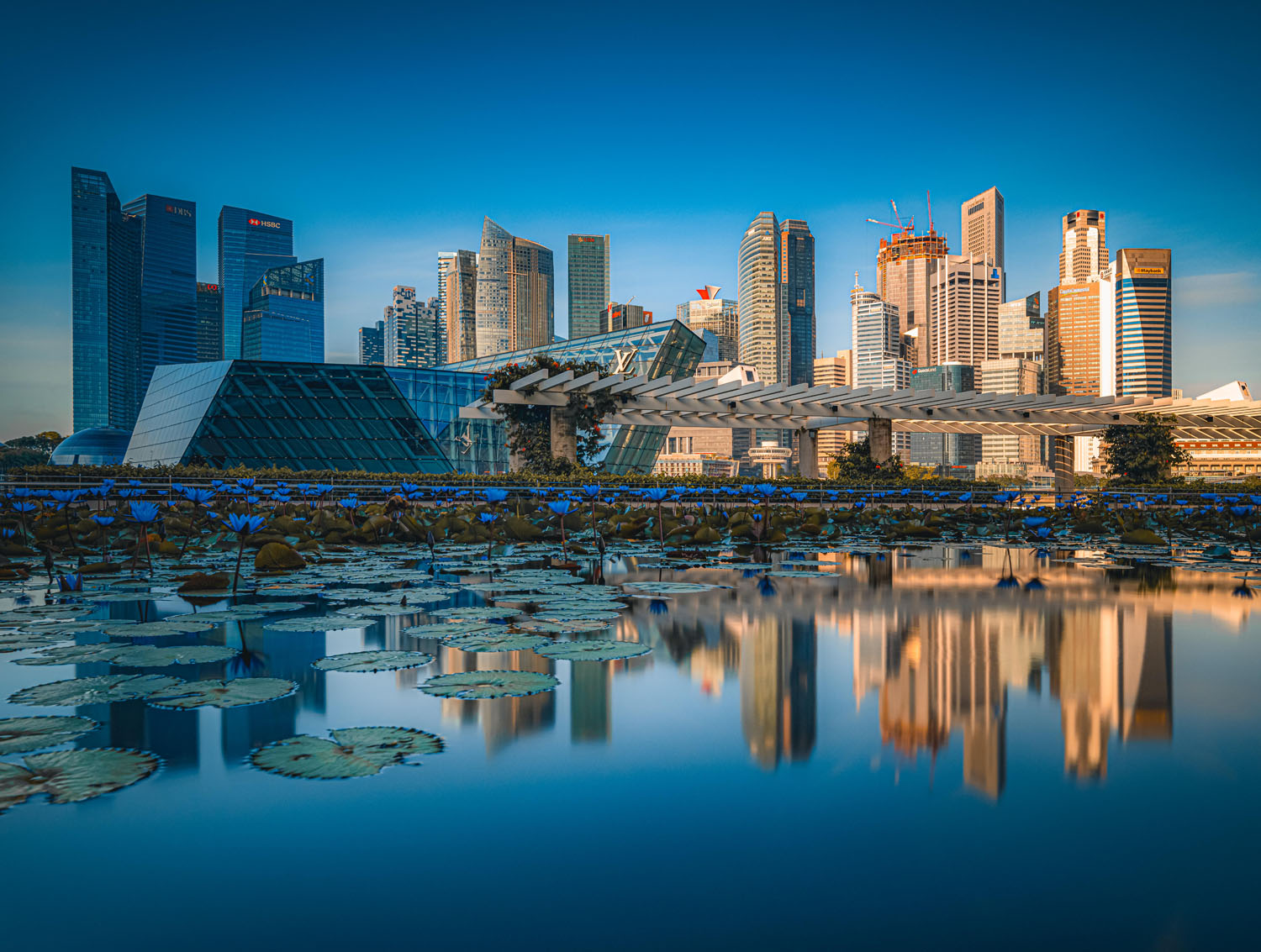Journey with architectural photography
I am a photography enthusiast residing in the city-state of Singapore, who uses photography as a creative outlet and to remember the places that I have lived or visited, and the people that I have met. Since young, I was exposed to photography as it was one of my father’s many hobbies and he bought me my first camera (Canon 450D) when I graduated from college. I only became more serious about photography when I was pursuing my postgraduate studies in the UK, and was able to make the occasional weekend trips to various European cities. The excitement of seeing new places, people and experiencing new cultures, food and even the seasonal weather was the catalyst for my photography passion.

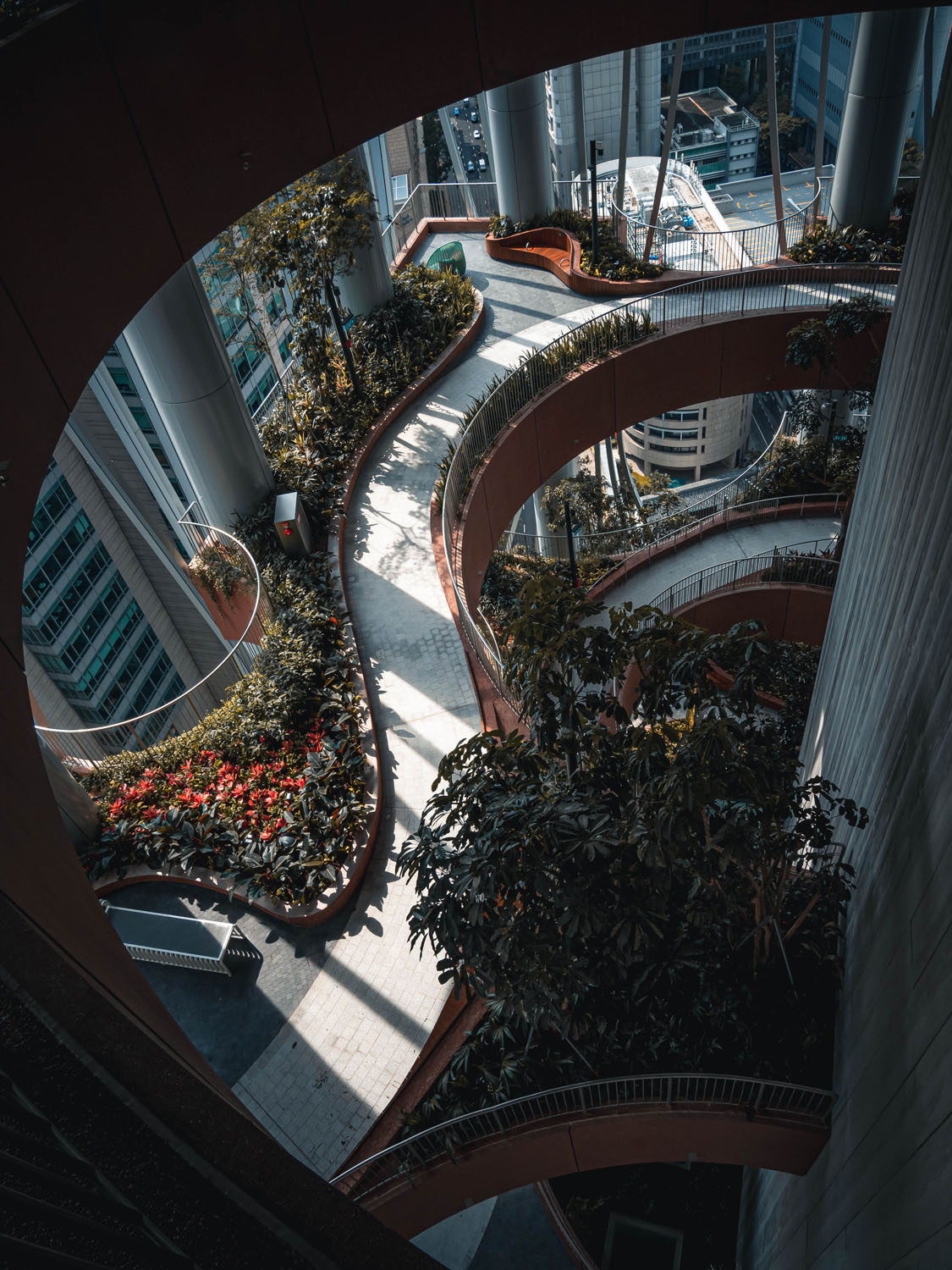

RIGHT: Olympus E-M5 MK II . Olympus M.Zuiko 12-100mmF4.0 @12mm . F/13 . 1/30” . ISO 250
Over the last decade of my research career in semiconductor technology, I have discovered photography to be an artistic respite for an overwhelmingly technical work. I found immense joy in the process of shooting and sharing my photos and knowledge through various social media sites. Over the years, my camera gear has changed from Canon DSLR systems (APSC to Full-Frame) to Mirrorless systems (Sony Full-Frame and Olympus M43).
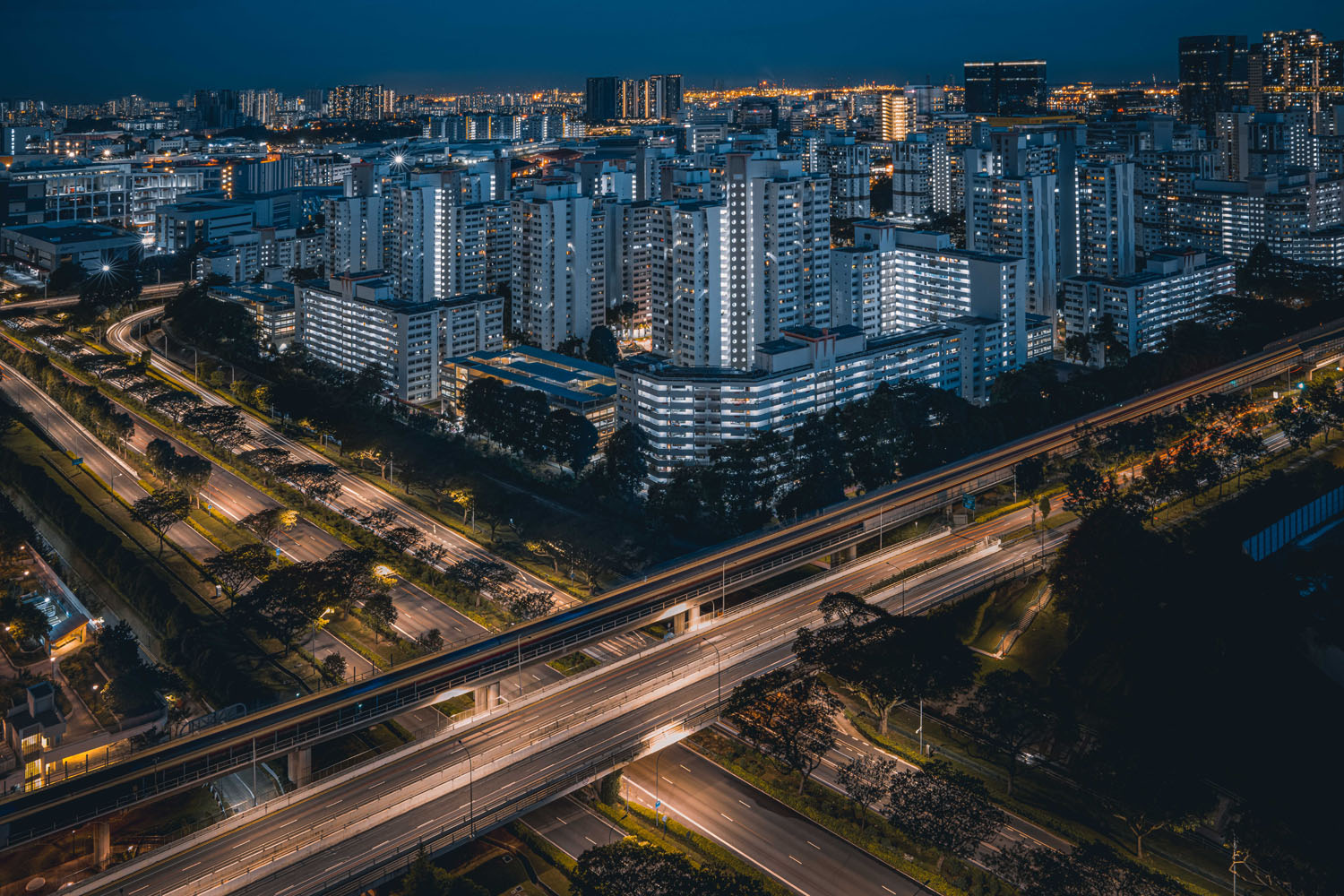
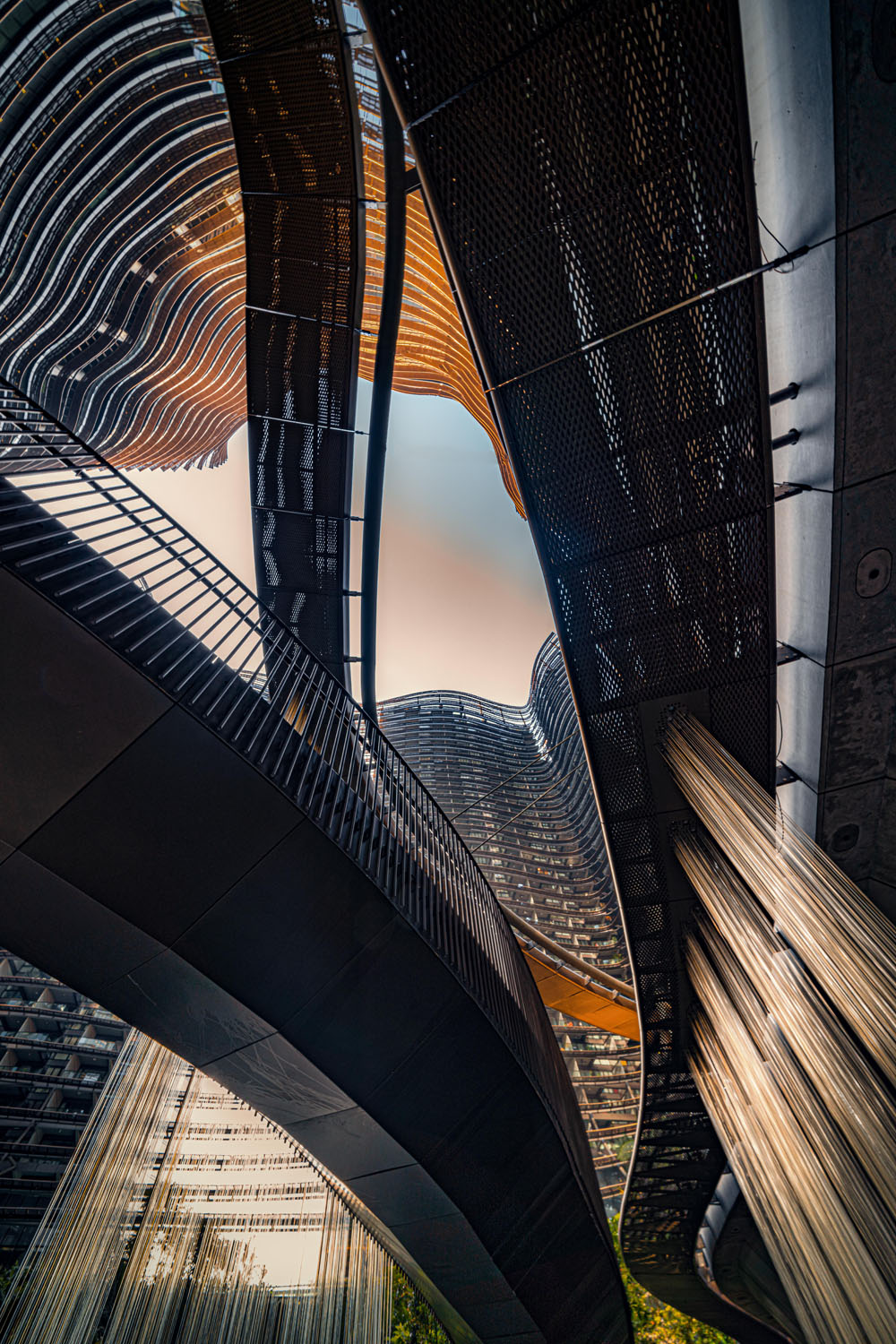
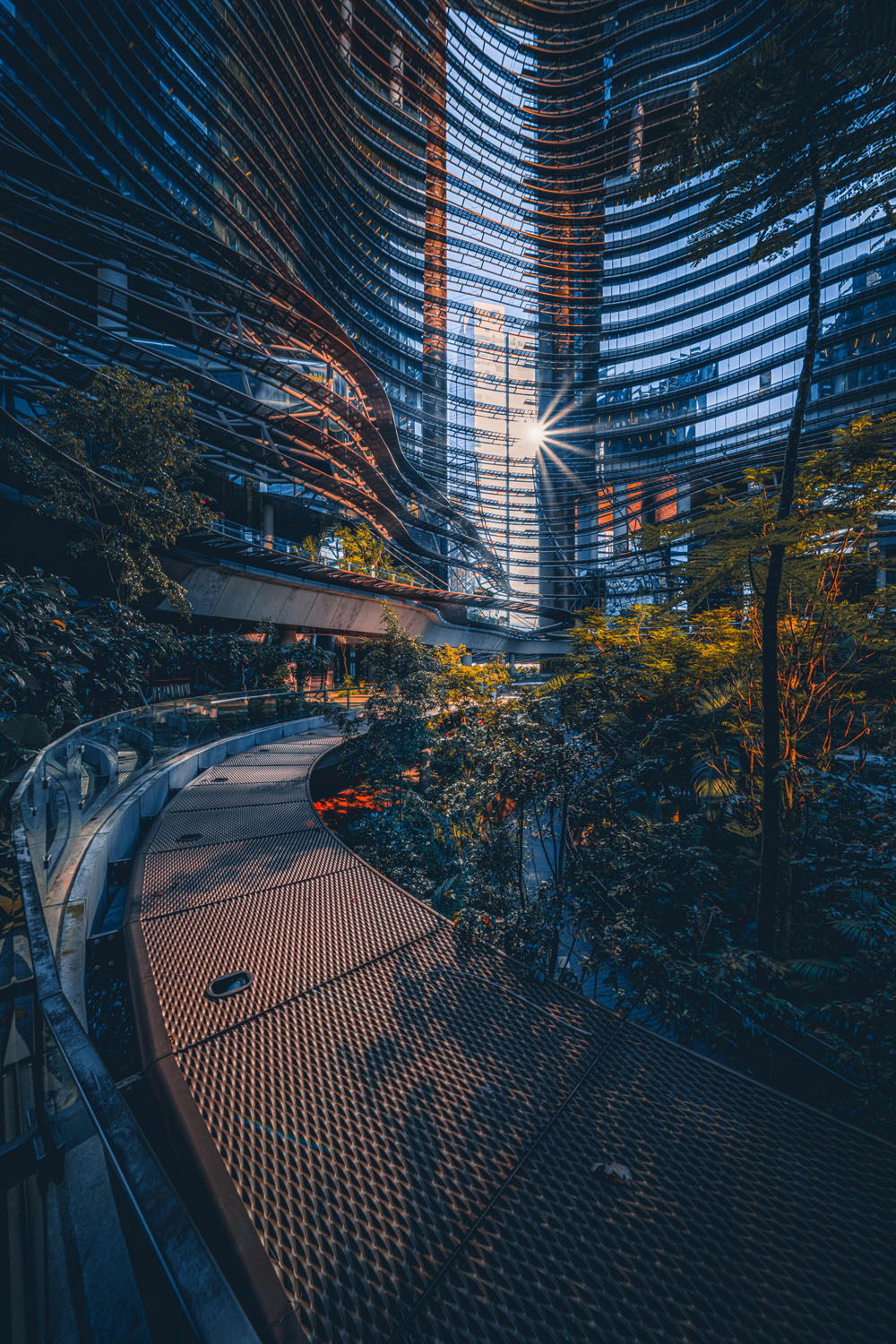
RIGHT: Sony Alpha 7R IV . Sony FE 12-24mmF4 @12mm . F/18 . 1/15” . ISO 40
Before the COVID-19 pandemic, I shot anything and everything that caught my eye, especially during my overseas vacations. During the last 2 years, due to travel restrictions, urban architectural photography organically became my main focus as Singapore is filled with iconic landmarks and I wanted to document some of its architectural history amidst its rapid urban redevelopment.

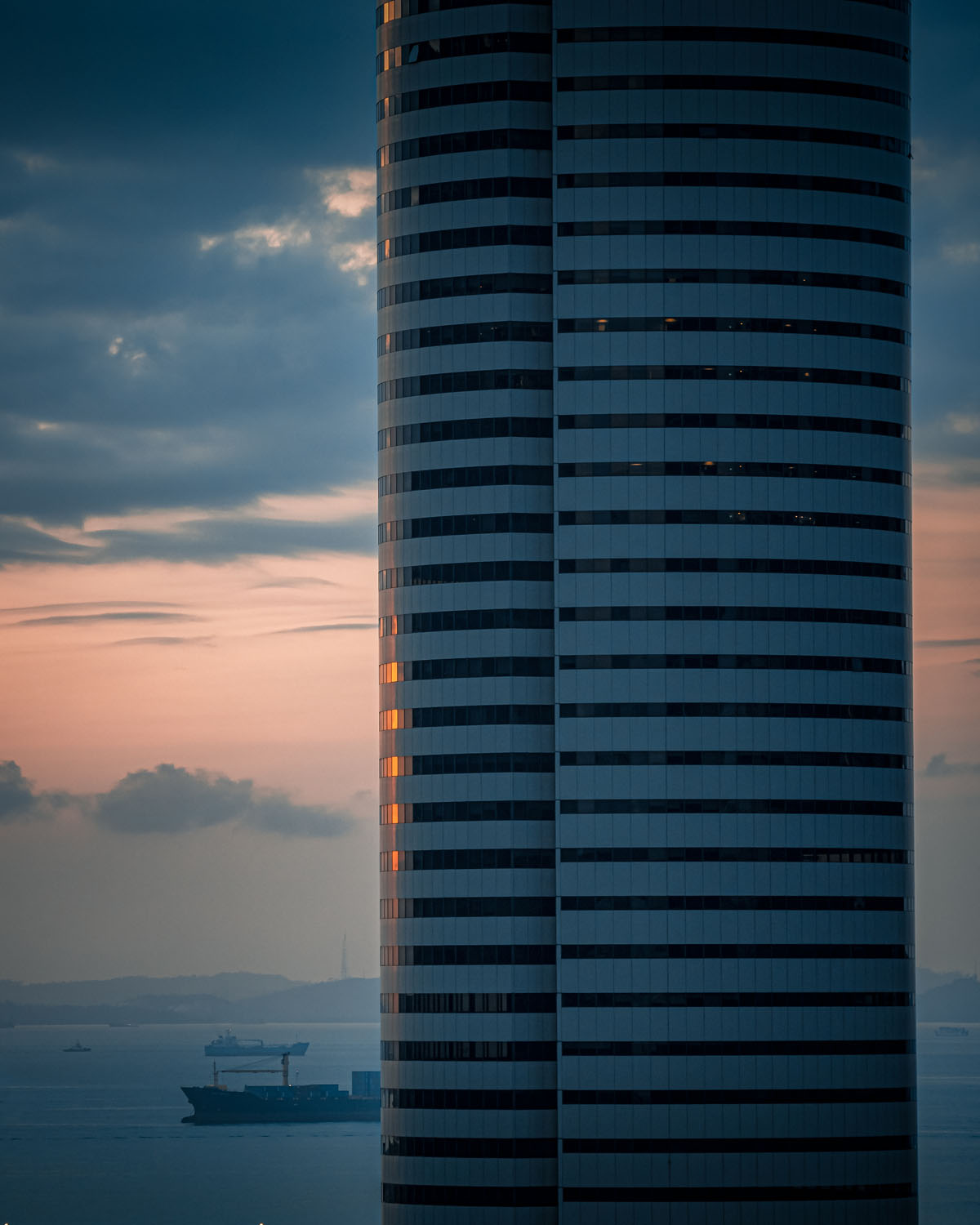
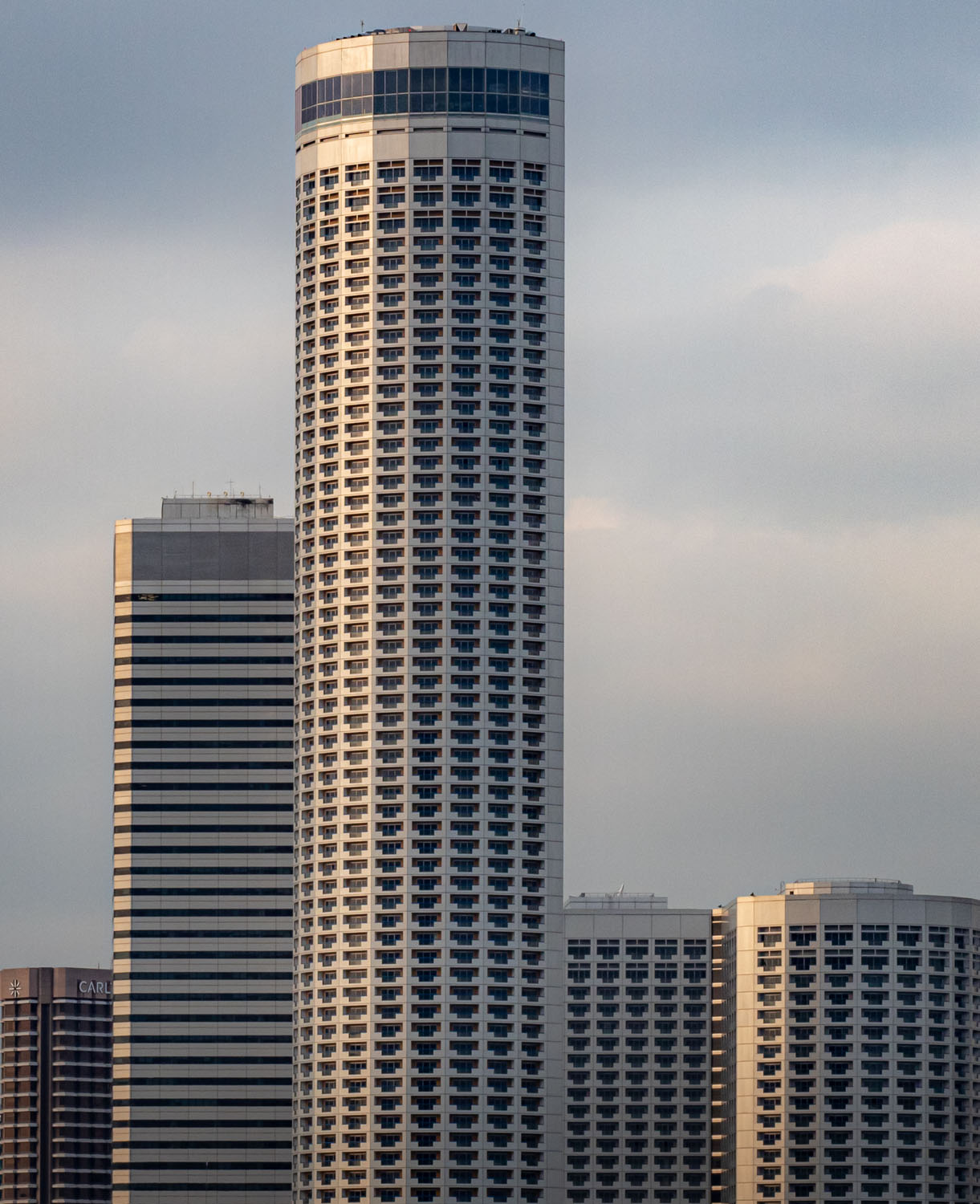
RIGHT: Olympus E-M5 MK II . Olympus M.Zuiko 12-100mmF4.0 @61mm . F/11 . 1/200” . ISO 400
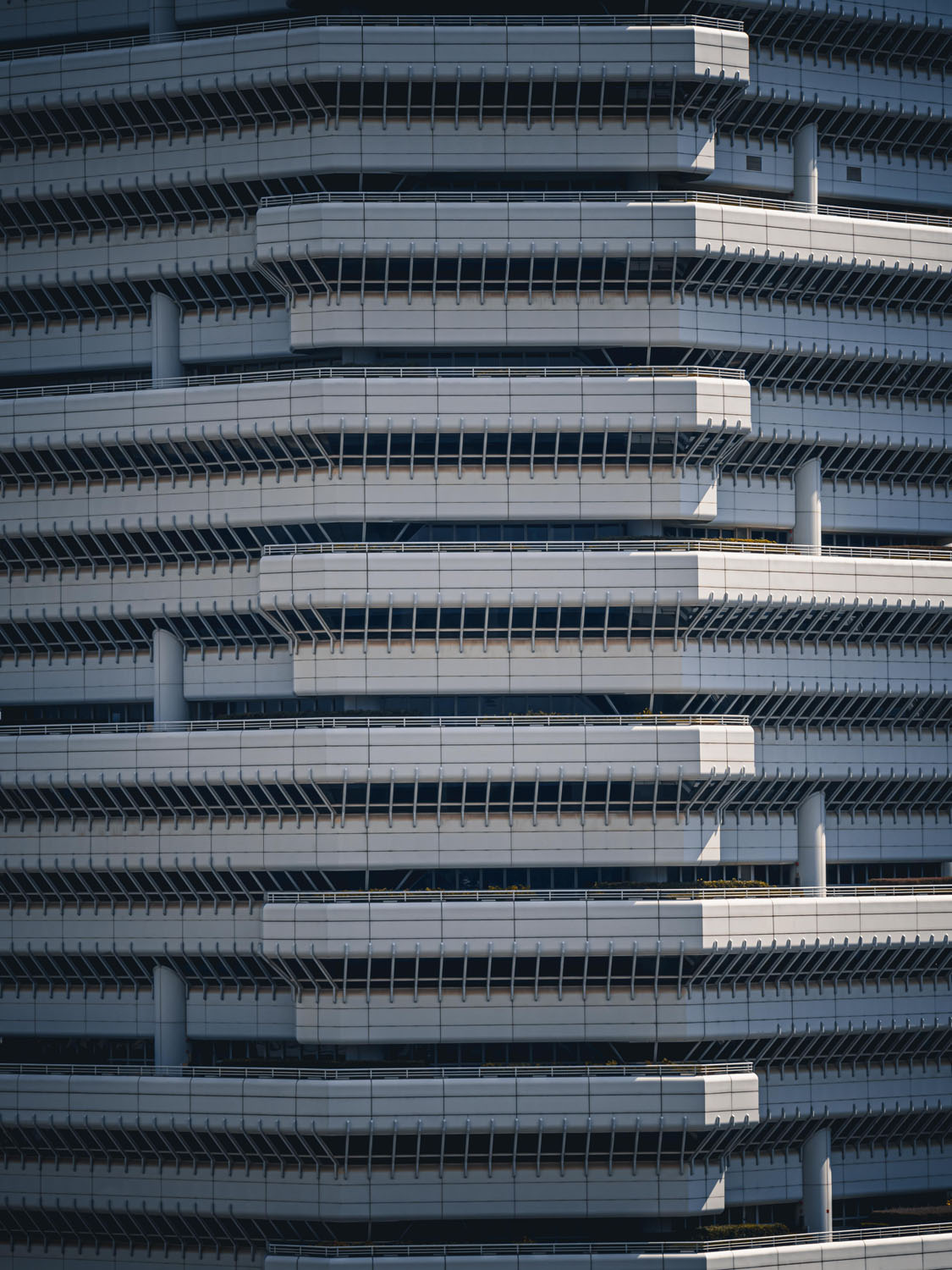
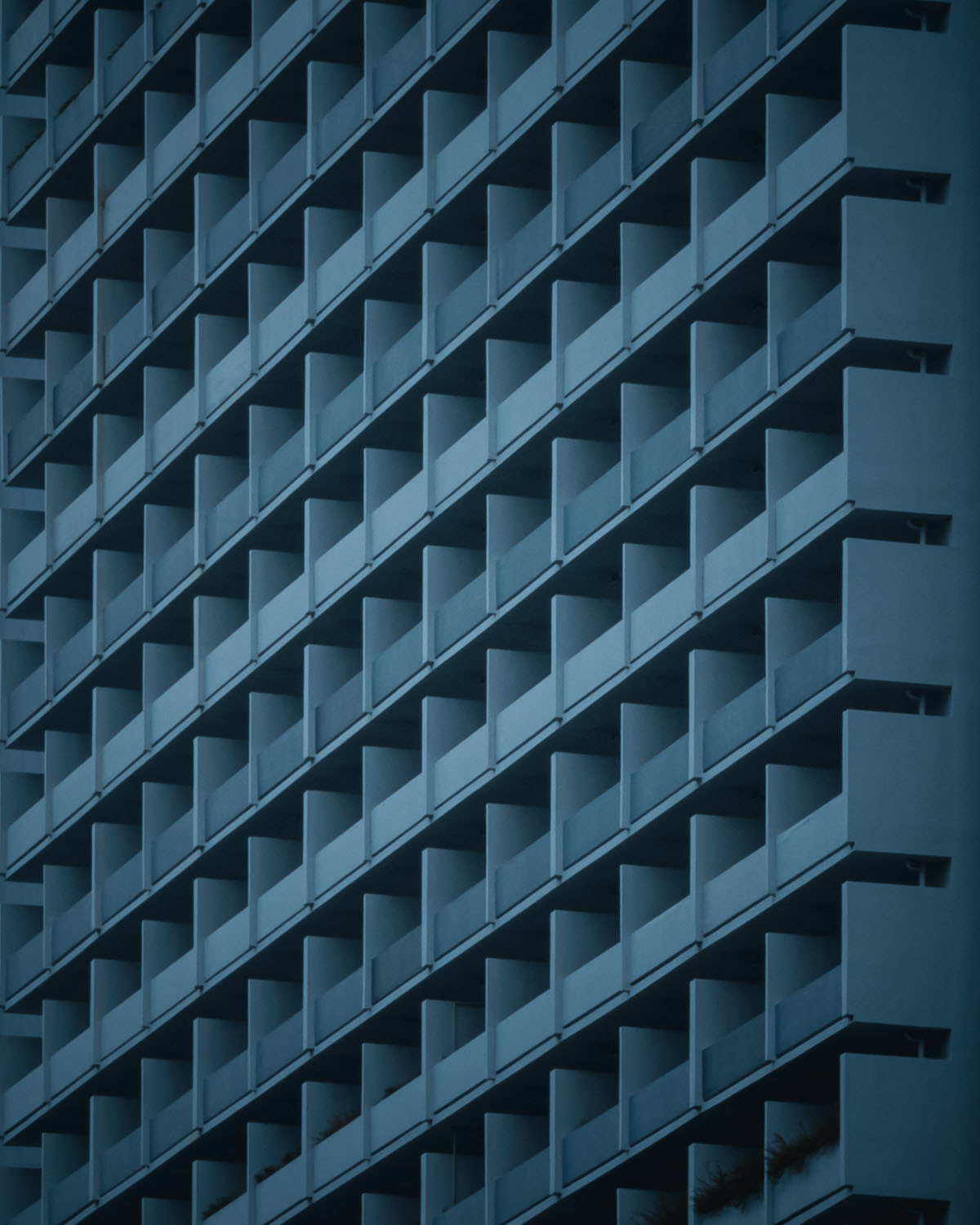
RIGHT: Olympus E-M5 MK II . Olympus M.Zuiko 12-100mmF4.0 @75mm . F/22 . 1/40” . ISO 200
Whenever I am walking or travelling on public transport, I constantly look out for buildings with interesting lines, shapes, colors and patterns. Then, I would look for unique vantage points especially nearby high-rise residential housing that are publicly accessible for me to shoot it. As for iconic landmarks, I would sometimes try to search for their names, architects and history such that I can focus on the unique architectural elements to capture. Usually, I tend to visit the chosen site several times, during different times of the day to see how the shadows fall on them such that I can obtain different perspectives that produce unconventional images.
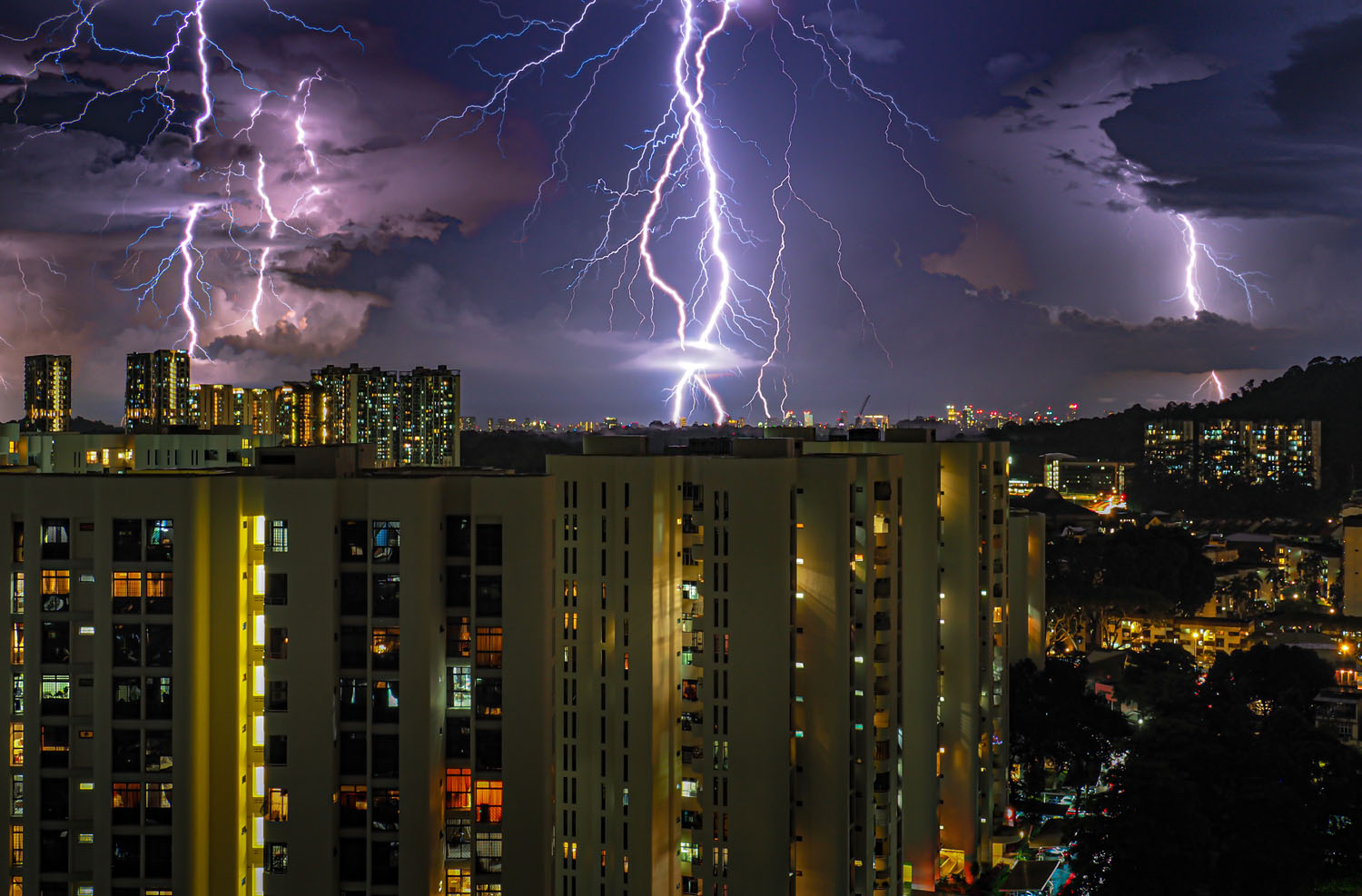
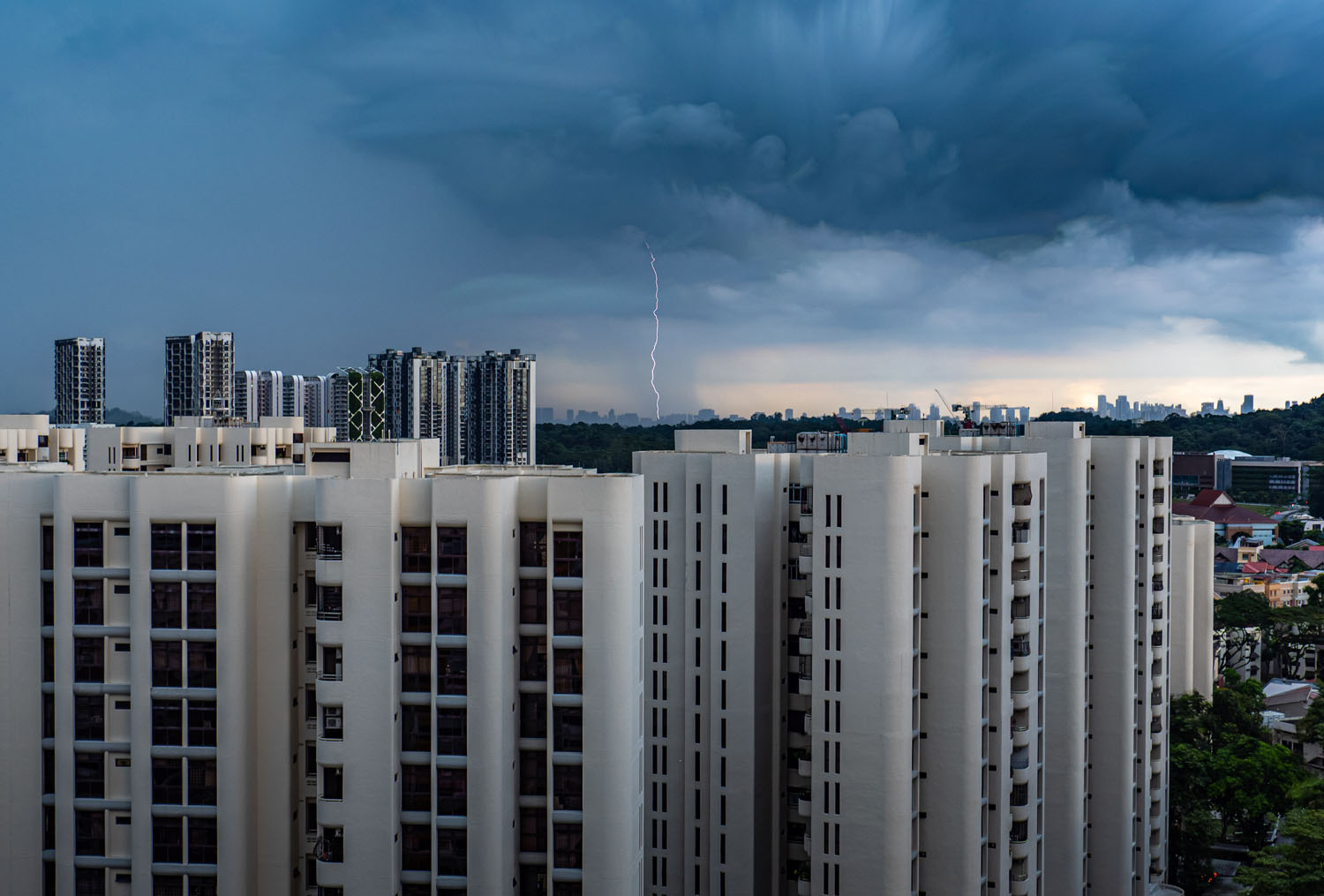
RIGHT: Olympus E-M5 MK II . Olympus M.Zuiko 12-100mmF4.0 @23mm . F/4.0 . 4.0” . ISO 100
Currently, I have two camera systems – Sony A7R Mark IV and the Olympus E-M5 Mark II, where the latter was only recently purchased in late 2021. Initially, the main reason for my Olympus purchase was my long-term fascination with lightning photography since Singapore is actually a lightning capital with one of the highest rates of lightning activity in the world. To learn more about lightning photography, I joined a local Telegram photography group and was advised to try out the Olympus M43 system. The Olympus Live Composite feature made it so amazingly simple to capture lightning without the need of an additional lightning detector or trigger system and I got to see a preview of the final image as the shoot progresses.
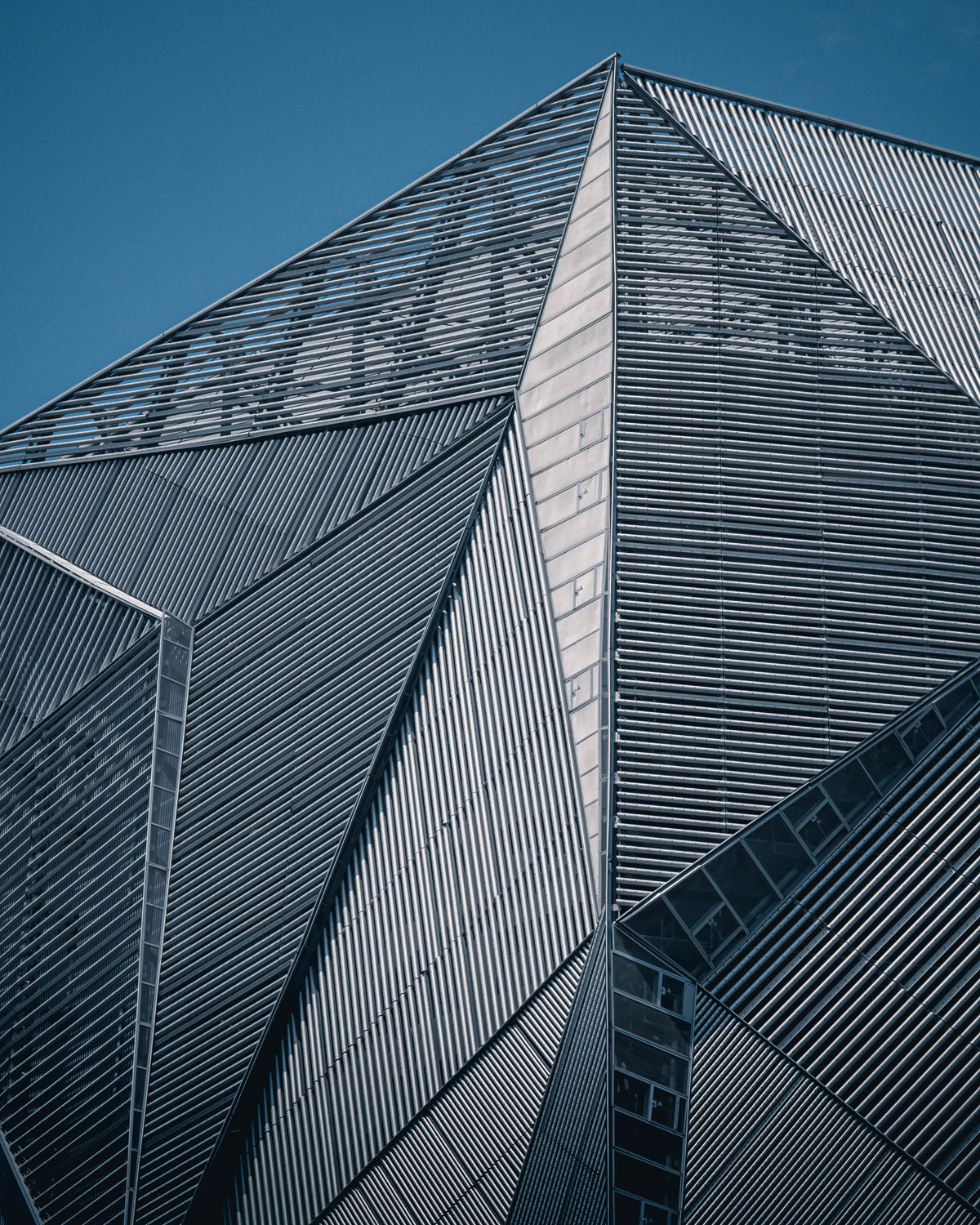

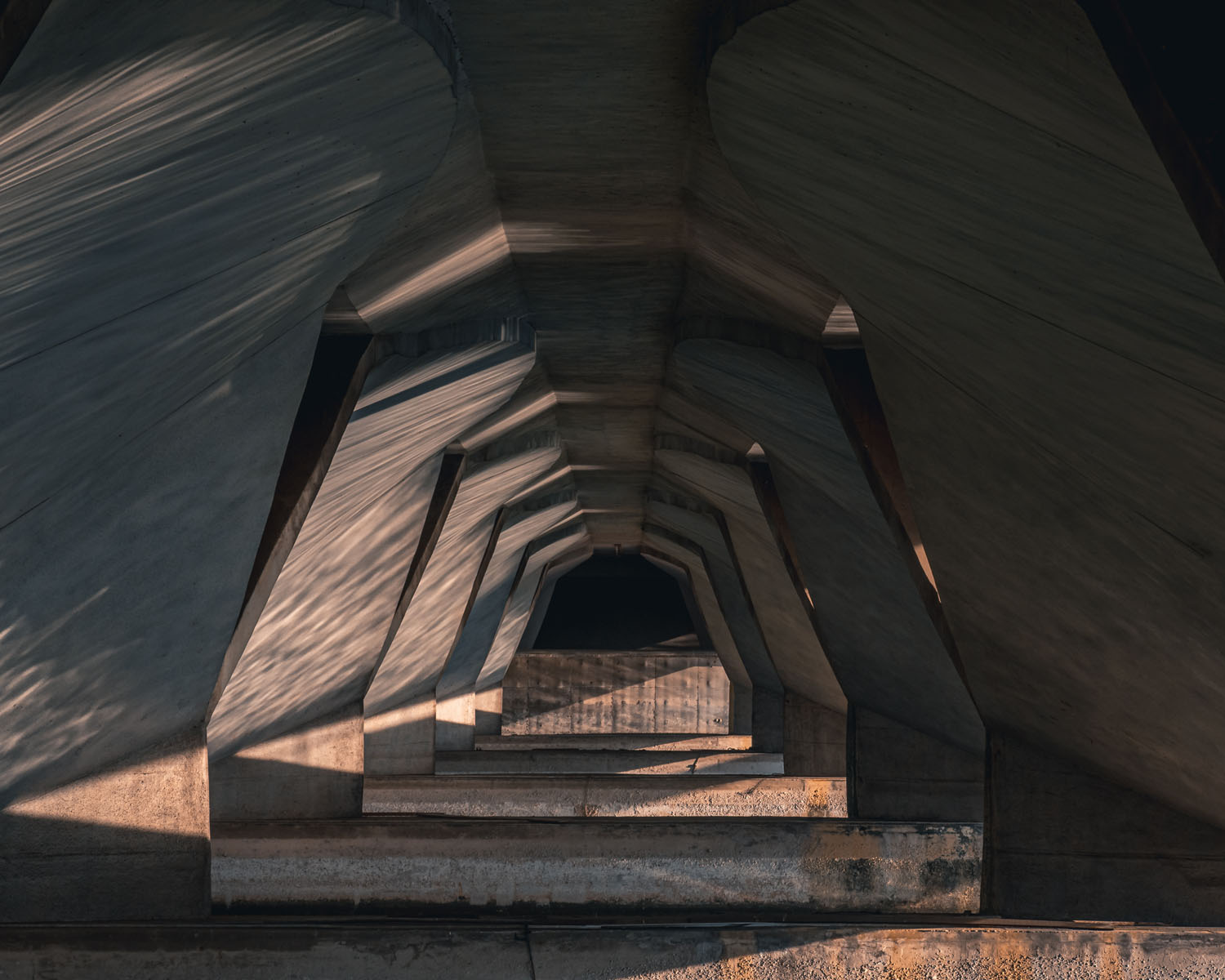
RIGHT: Olympus E-M5 MK II . Olympus M.Zuiko 12-100mmF4.0 @100mm . F/10 . 1/100” . ISO 200
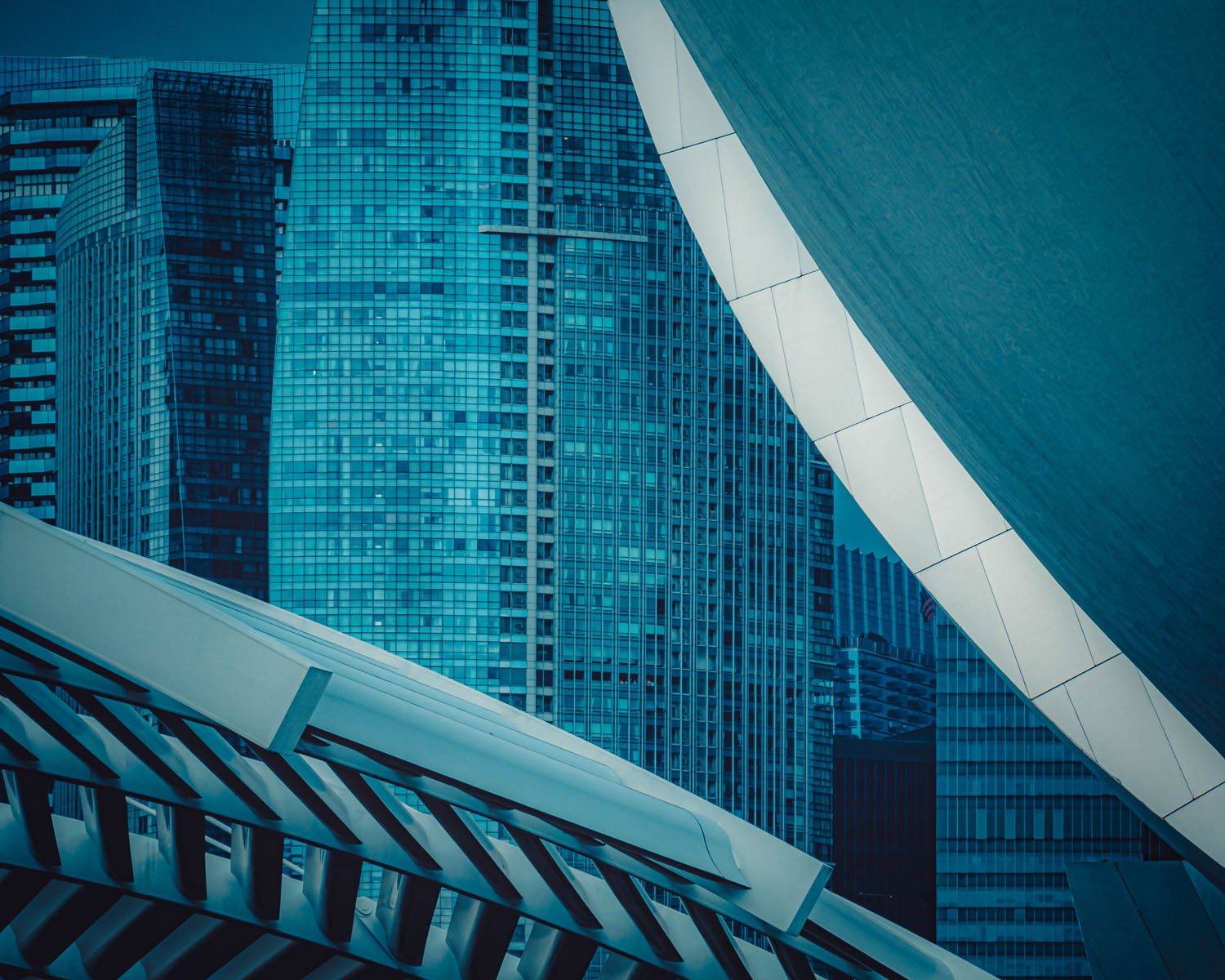
My first two Olympus lenses were the M.Zuiko 12-100mm f/4 PRO and the M.Zuiko 25mm f/1.8 and the former is my favorite lens since it is very versatile with a very useful range. Recently, I have started using the M.Zuiko 8-25mm f/4 PRO and the M.Zuiko 100-400mm f/5-6.3, both loaner gear from the local Olympus camera distributor after I conducted an Architecture and Street Photography workshop for the local Olympus club in January 2022. With this array of lenses, I have coverage from 16mm to 800mm (Full-Frame equivalence) which provides me with many options for different situations from architecture and cityscapes to street and portraits.
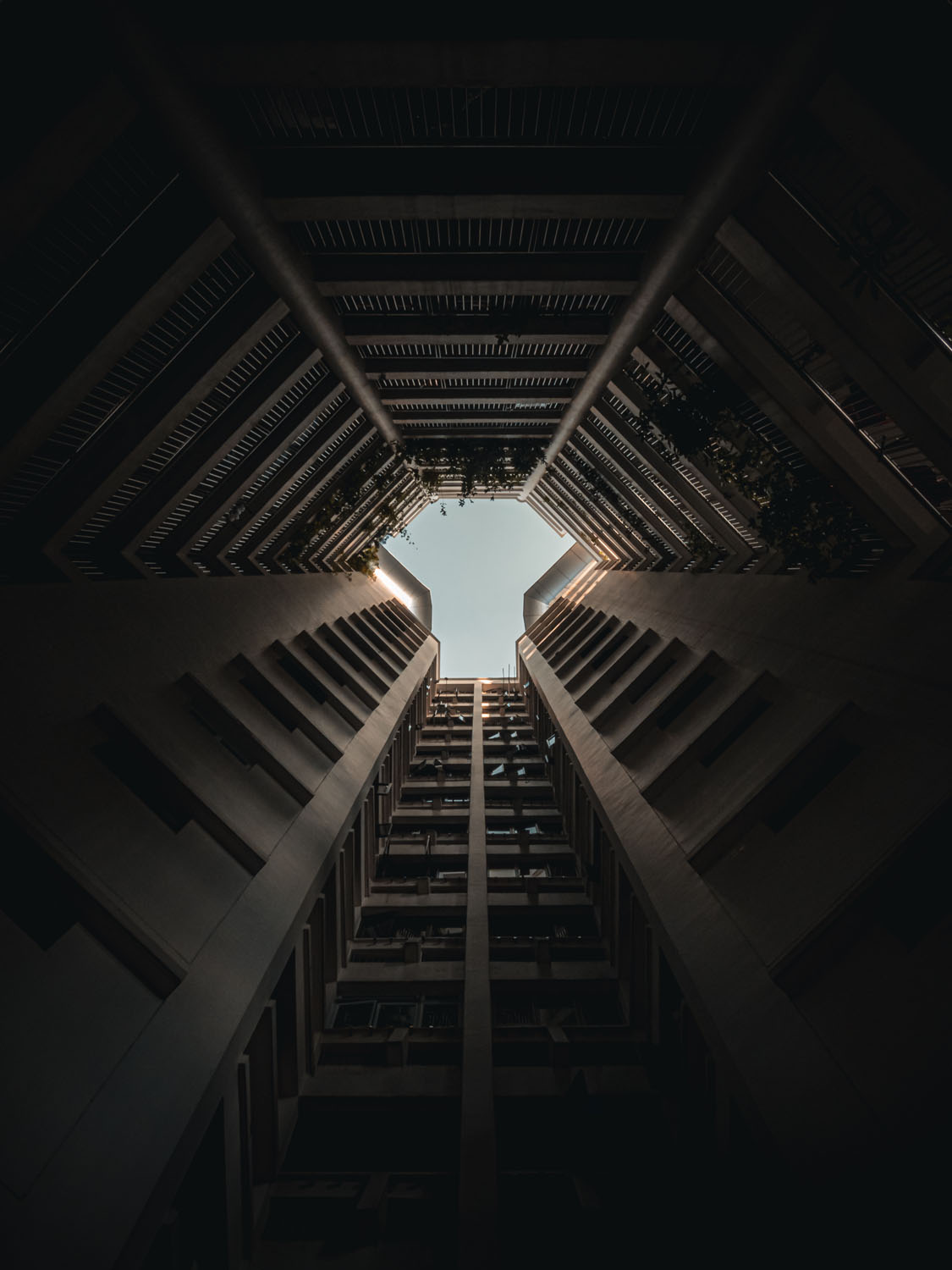

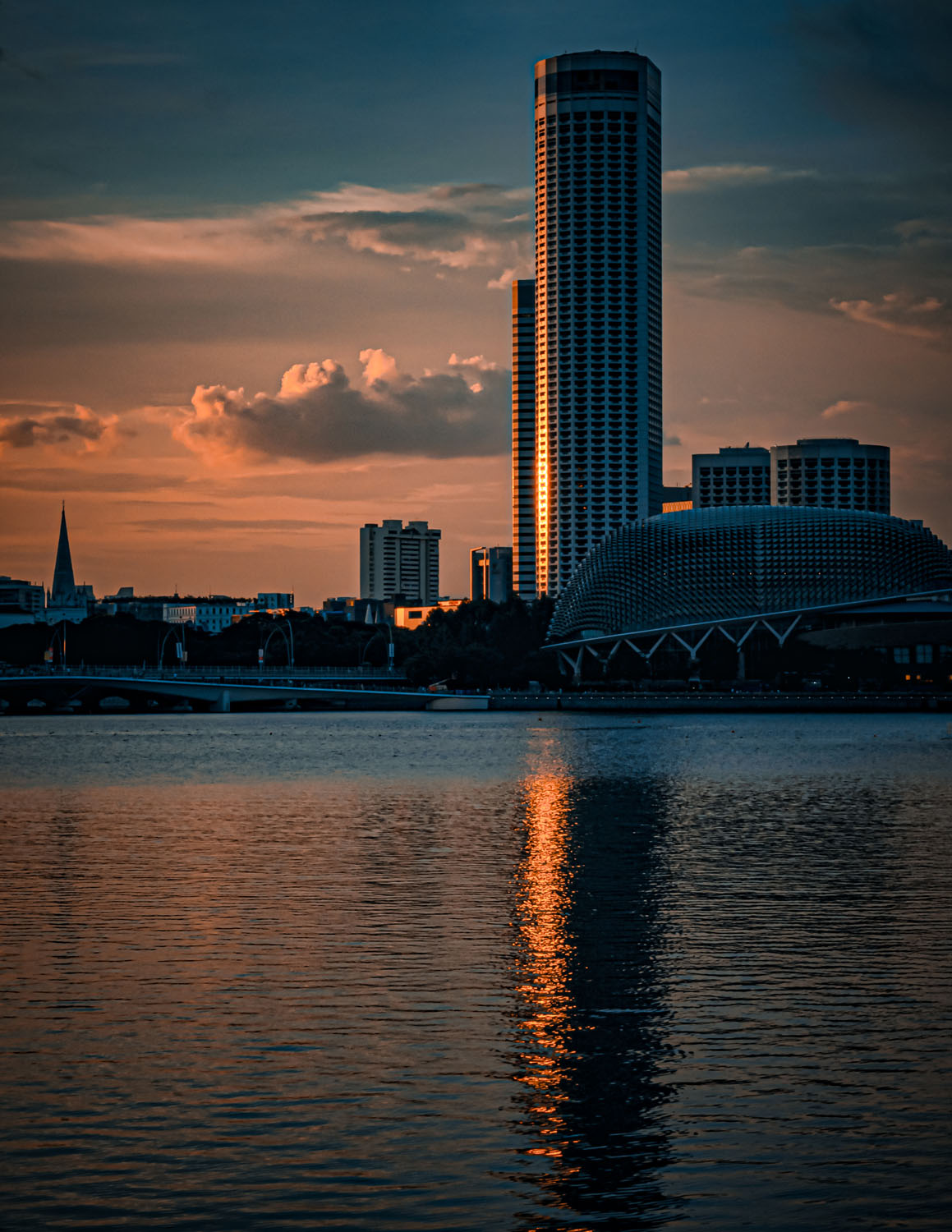
RIGHT: Olympus E-M5 MK II . Olympus M.Zuiko 12-100mmF4.0 @35mm . F/16 . 1/80” . ISO 200
In terms of architectural photography, I would like to highlight some of the key advantages of my current Olympus M43 setup:
● Sharp, smaller, lighter lenses especially the M.Zuiko 100-400mm f/5-6.3 which has a full-frame equivalent of 200-800 which is an incredible range for its weight.
● Amazing image quality even at 16MP, with a high-resolution mode that shifts the sensor to shoot multiple shots that combine into a final 40MP image.
● The entire setup of the Olympus E-M5 Mark II, M.Zuiko 100-400mm f/5-6.3, M.Zuiko 12-100mm f/4 PRO and M.Zuiko 8-25mm f/4 PRO is lightweight and compact enough to travel without compromising image quality. I also pack the H&Y Revoring 67-82mm Variable ND and CPL filters with a multipurpose clamp and/or tripod during my urban photowalks.
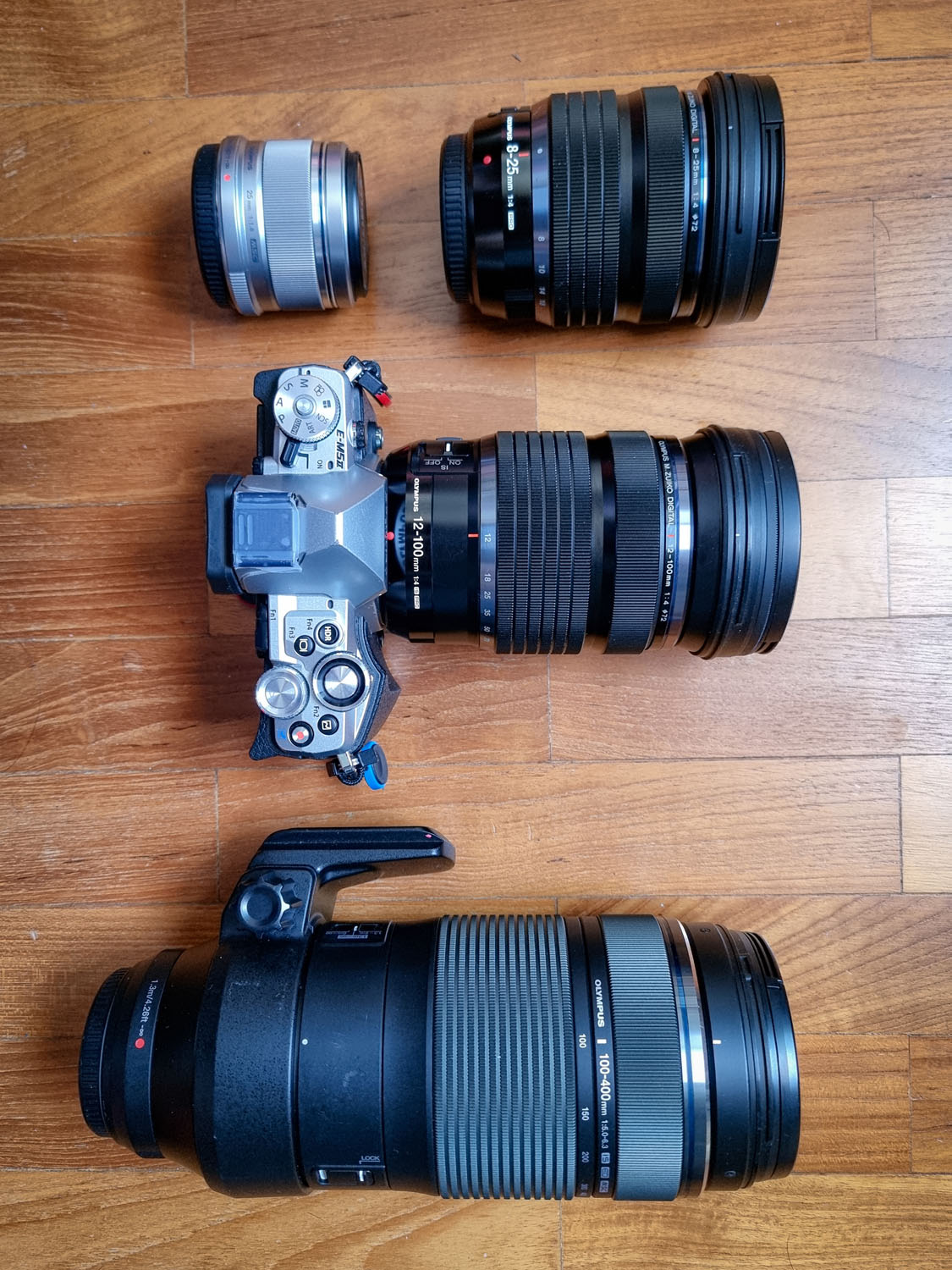
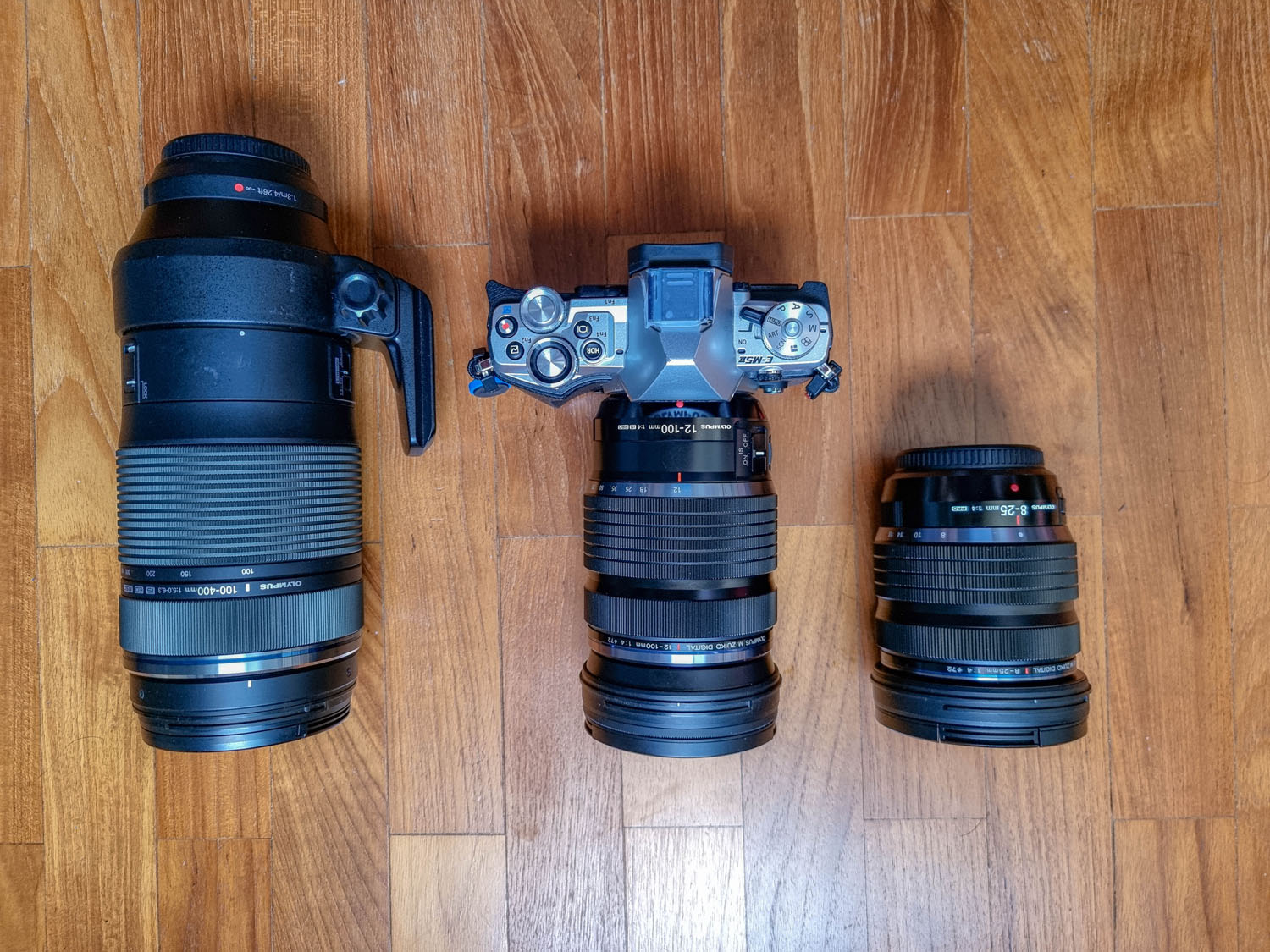
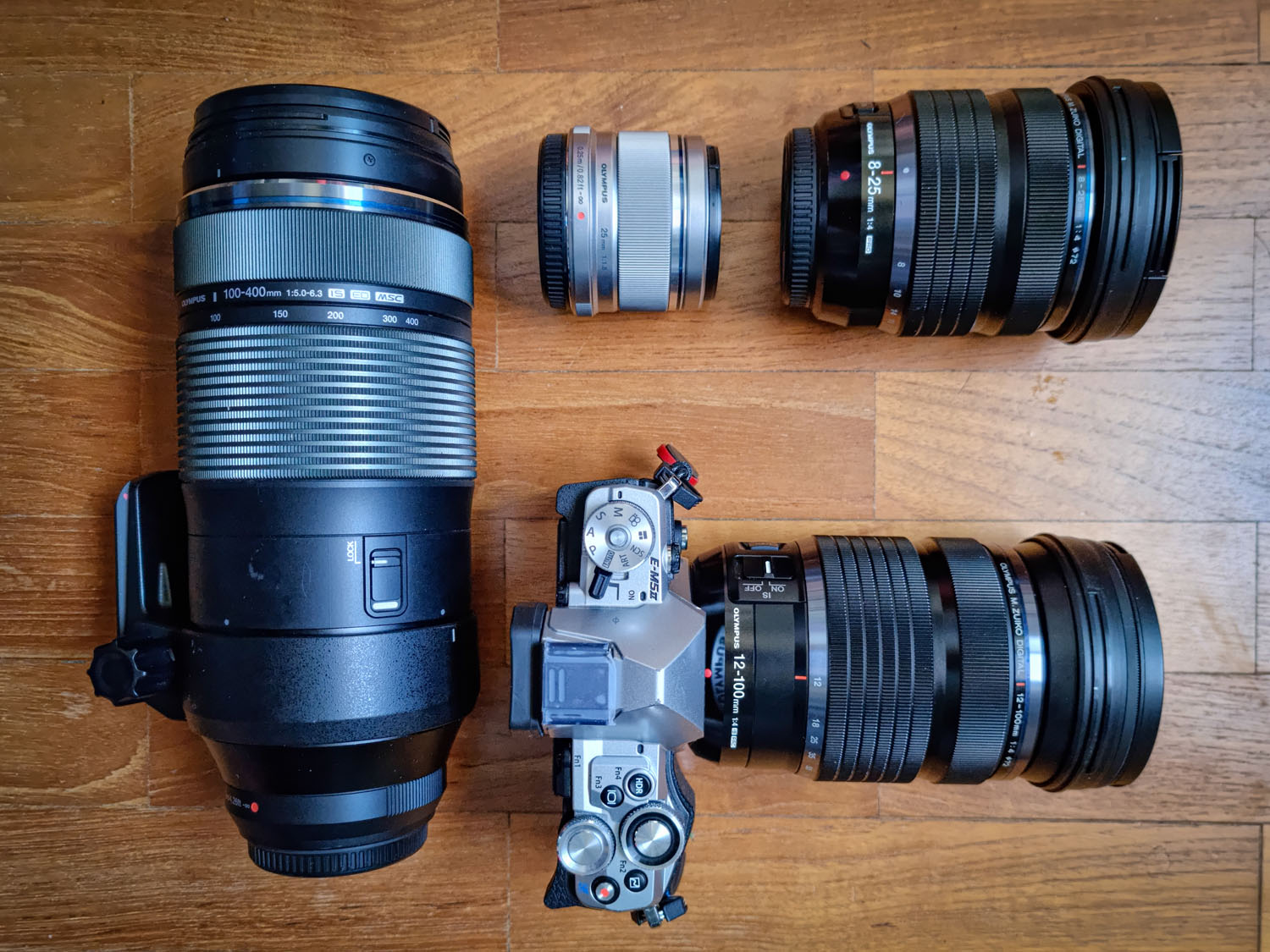
Despite the advantages, there are some parts that are lacking in my Olympus E-M5 Mark II as compared to my Sony A7R Mark IV setup:
● Short battery life where each battery lasts less than 1000 shots.
● Relatively poorer continuous AF with tracking performance, especially for moving subjects. However, this is expected and not a fair comparison since the Olympus E-M5 Mark II was released in 2015 and was not targeted at photographers who rely on continuous AF performance whereas the Sony A7R Mark IV has newer technology as it came out in 2019.
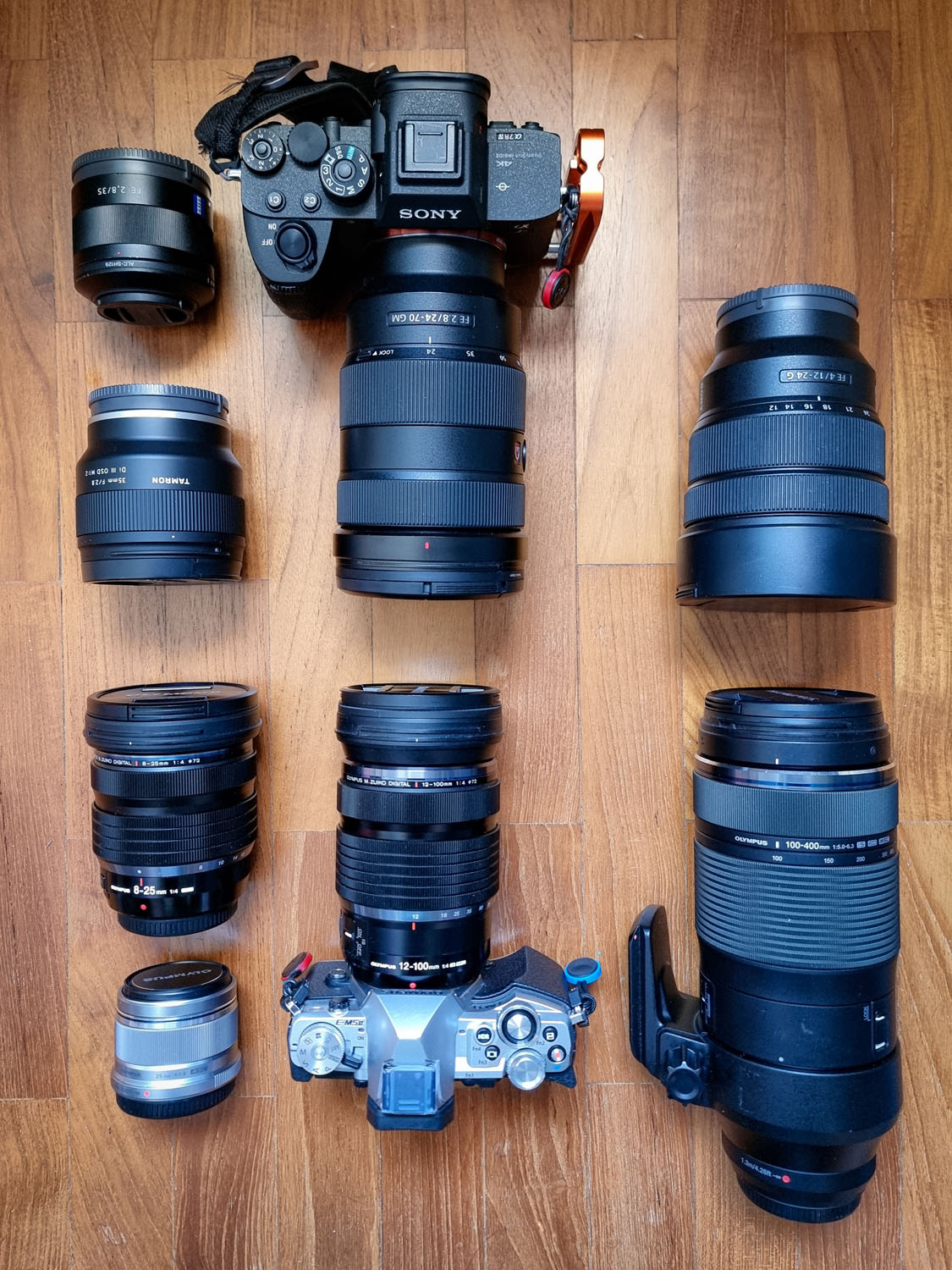
For post-processing, I primarily used Adobe Lightroom to import and edit the majority of my photos. Occasionally, I would use Adobe Photoshop for creating timelapse videos and sometimes even Luminar for their creative presets.
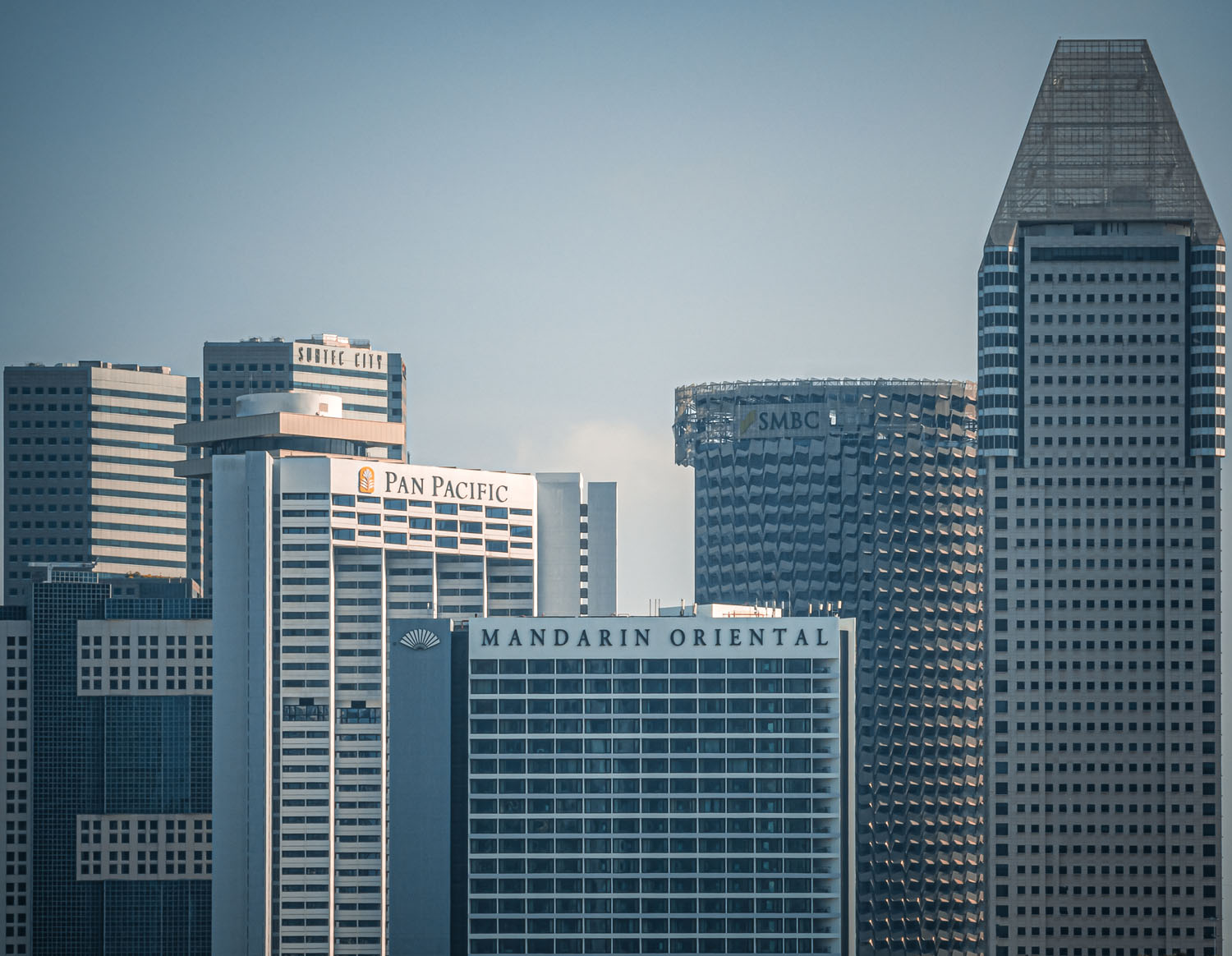
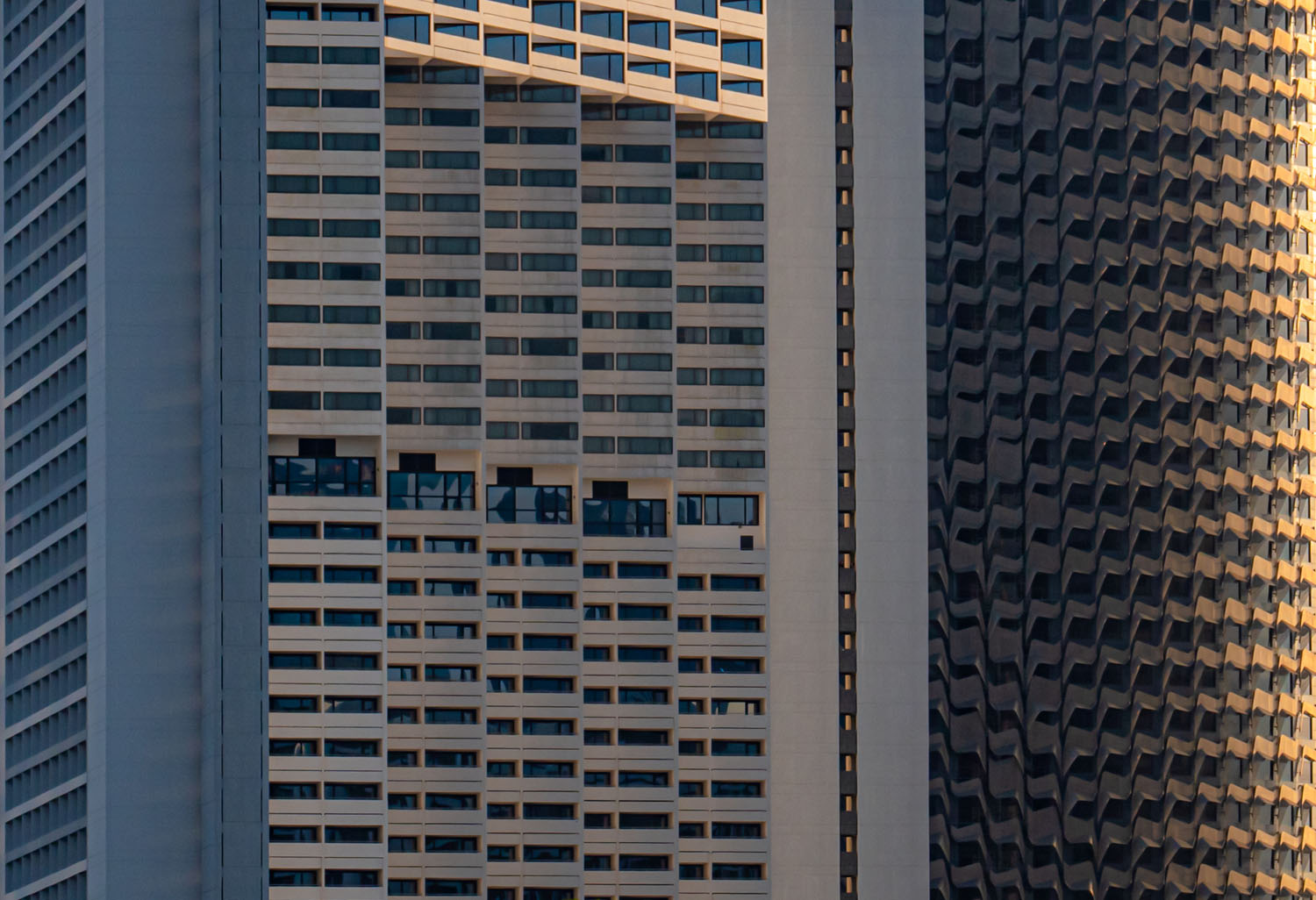

RIGHT: Olympus E-M5 MK II . Olympus M.Zuiko 100-400mmF5.0-6.3 @100mm . F/7.1 . 1/400” . ISO 100
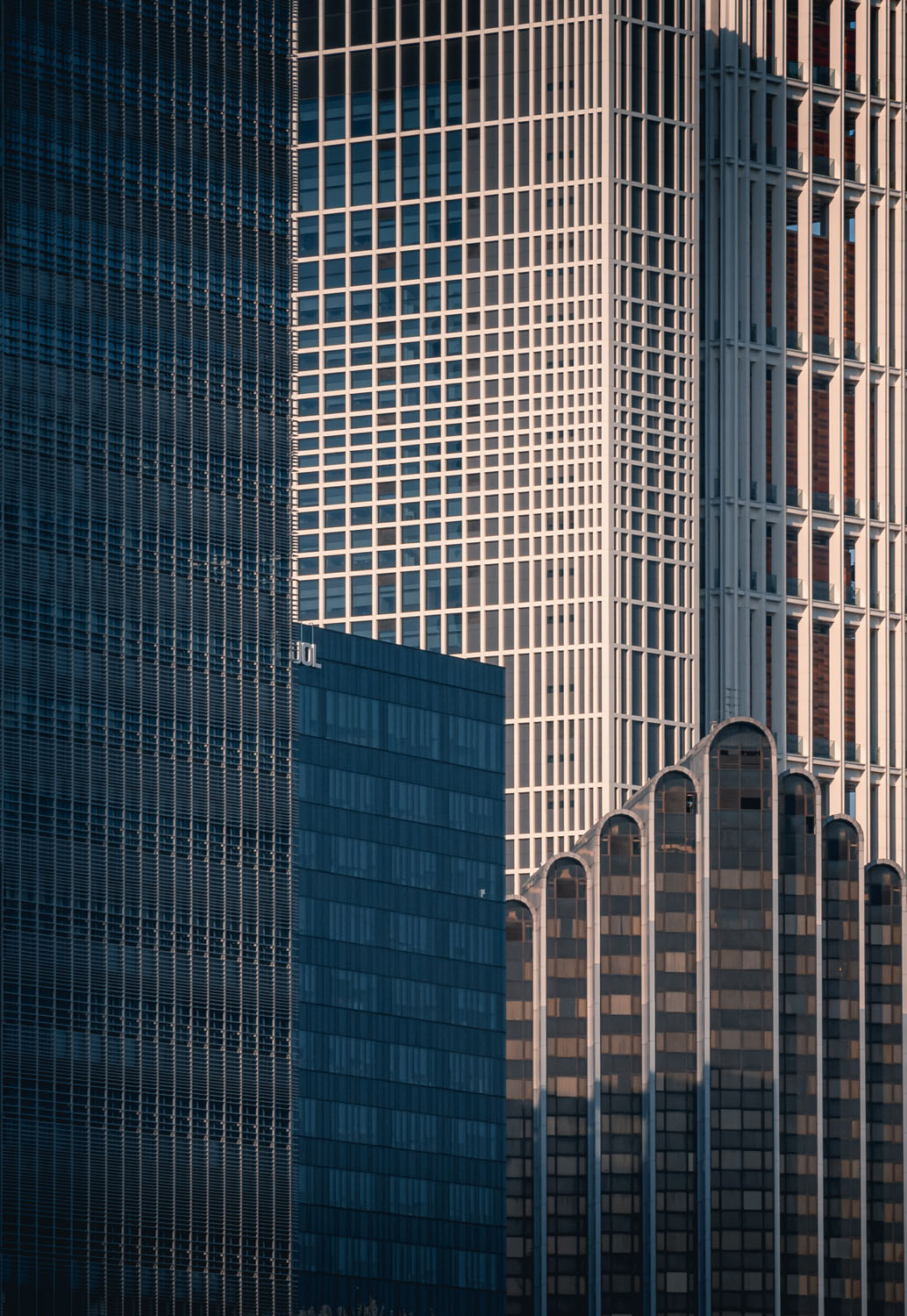
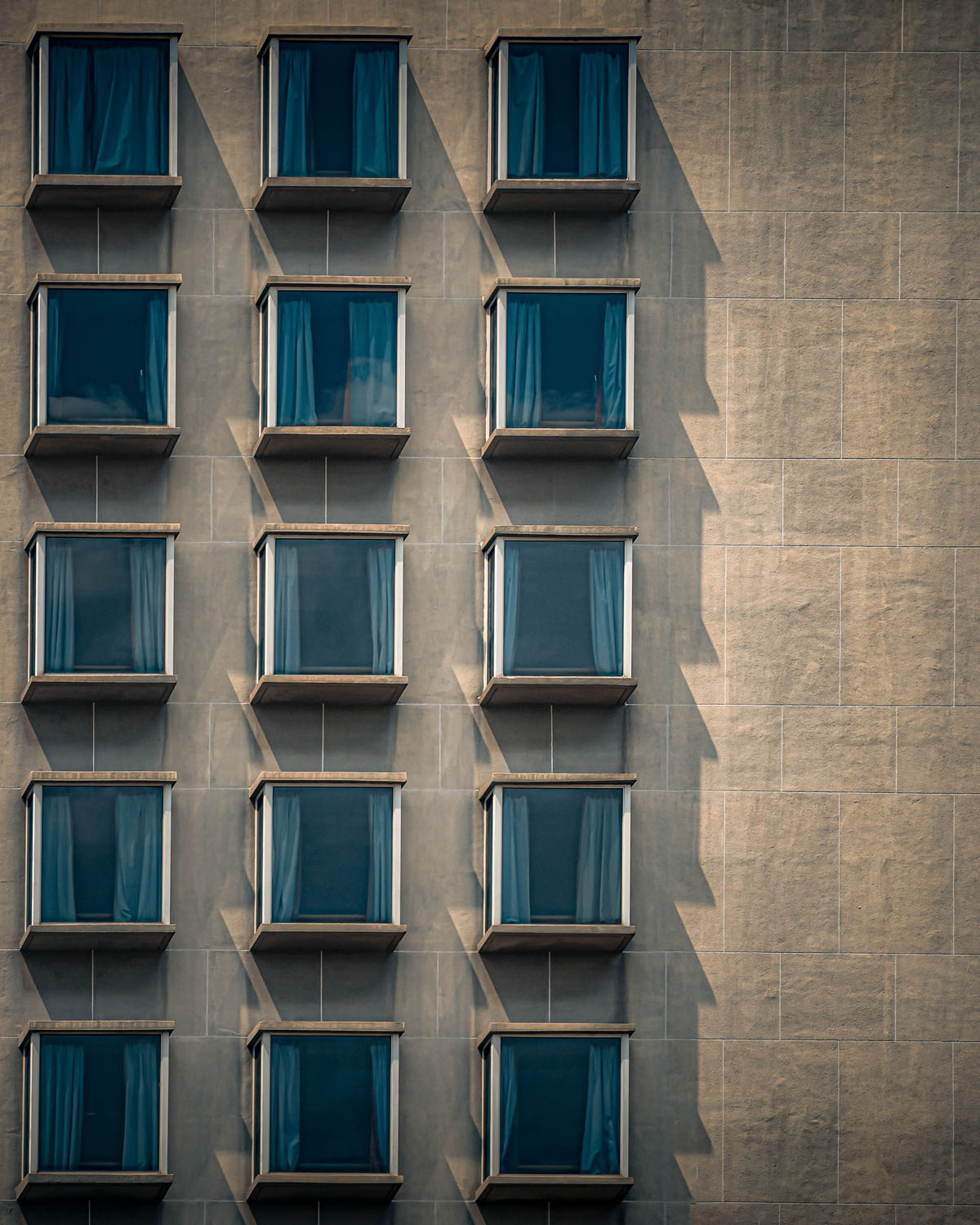
RIGHT: Olympus E-M5 MK II . Olympus M.Zuiko 12-100mmF4.0 @100mm . F/8 . 1/400” . ISO 200
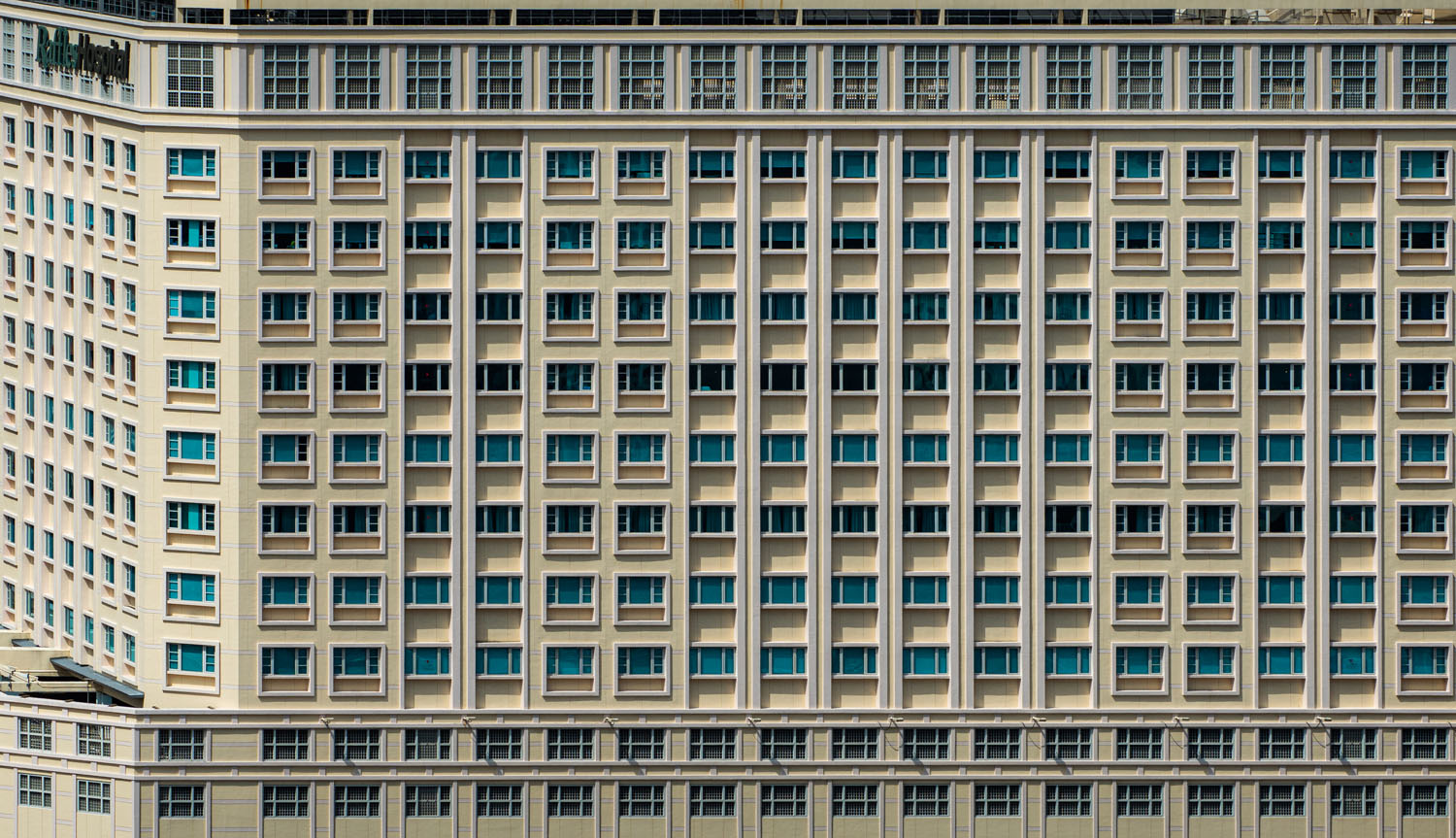

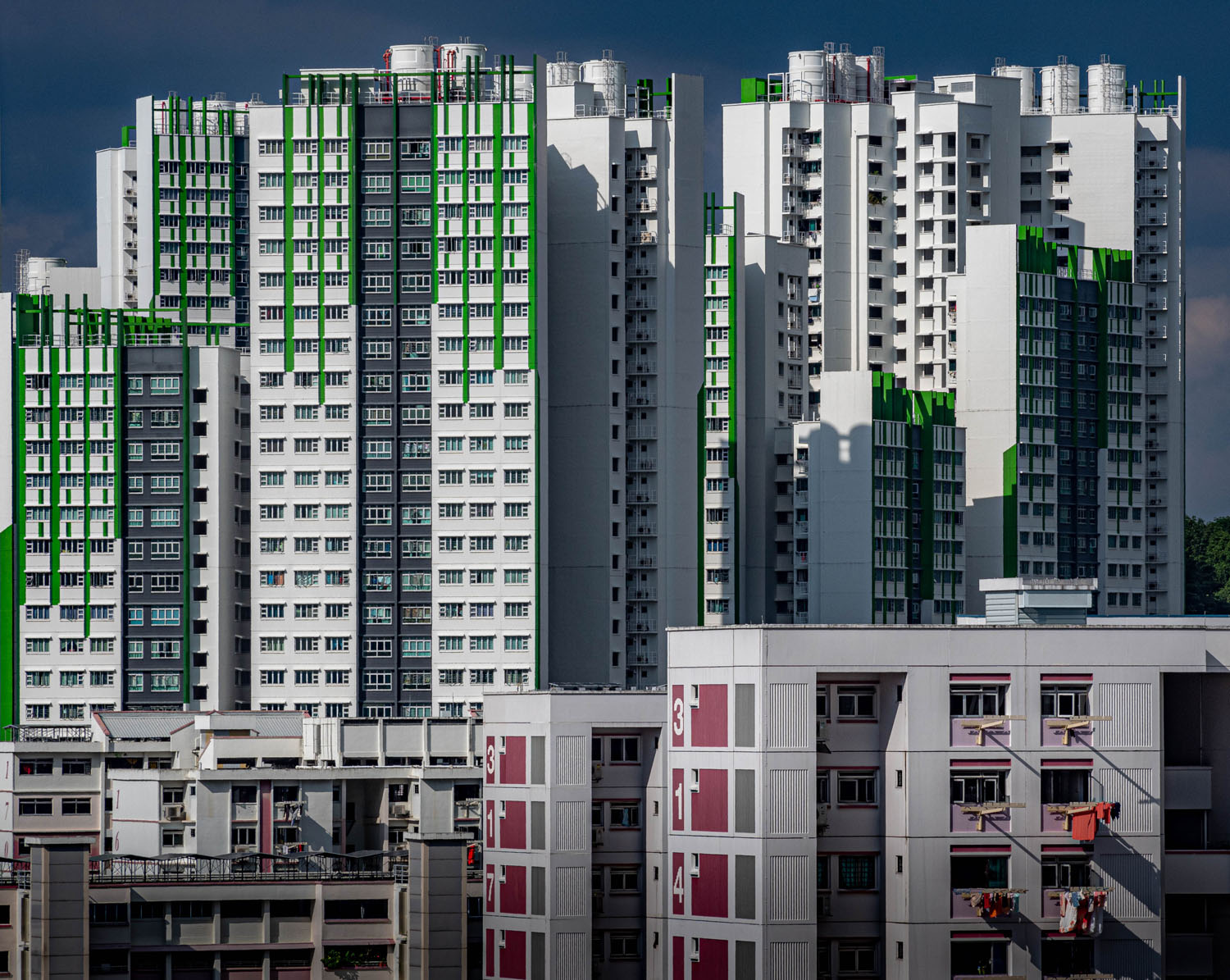
RIGHT: Olympus E-M5 MK II . Olympus M.Zuiko 12-100mmF4.0 @100mm . F/10 . 1/500” . ISO 100
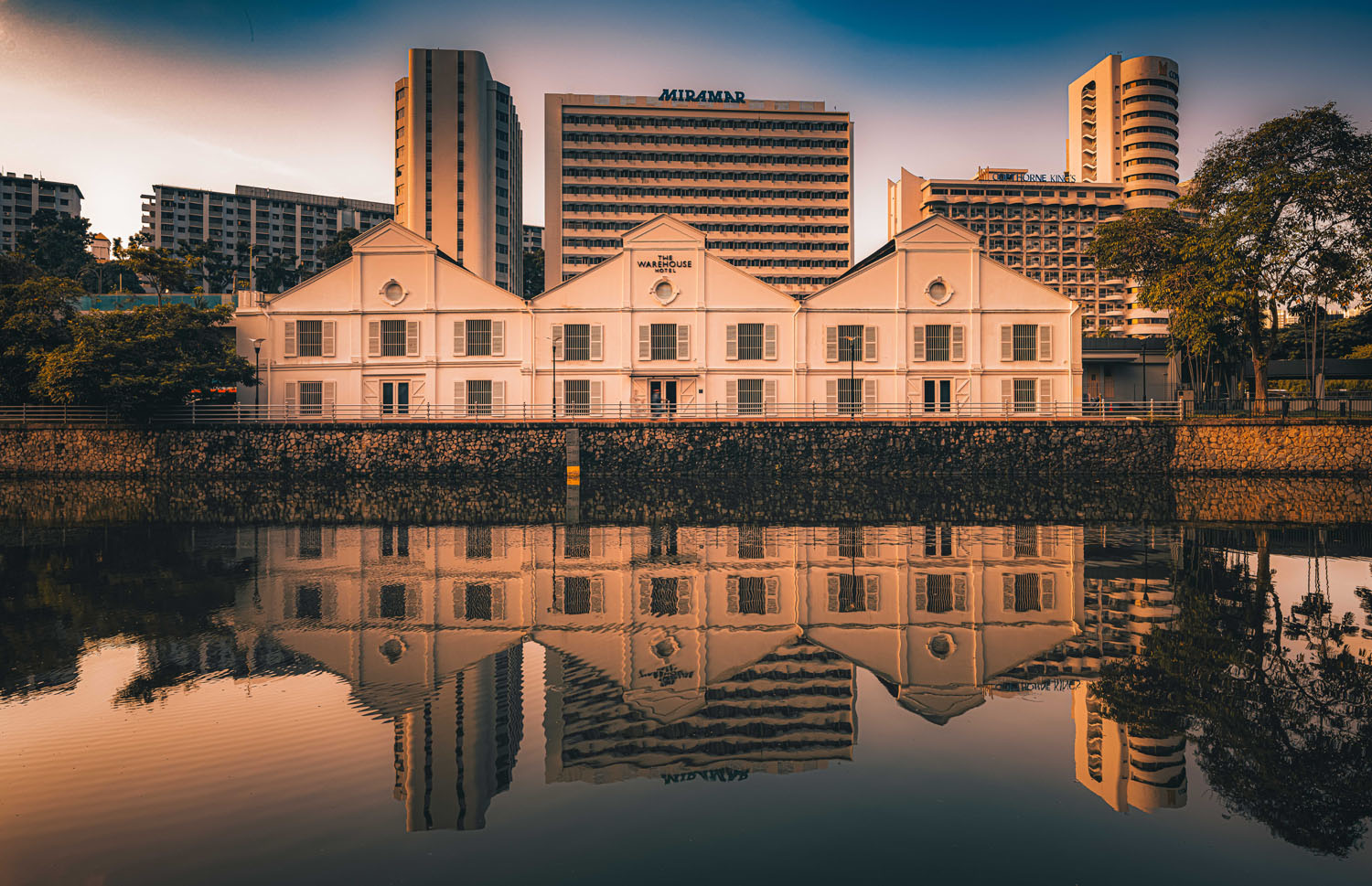
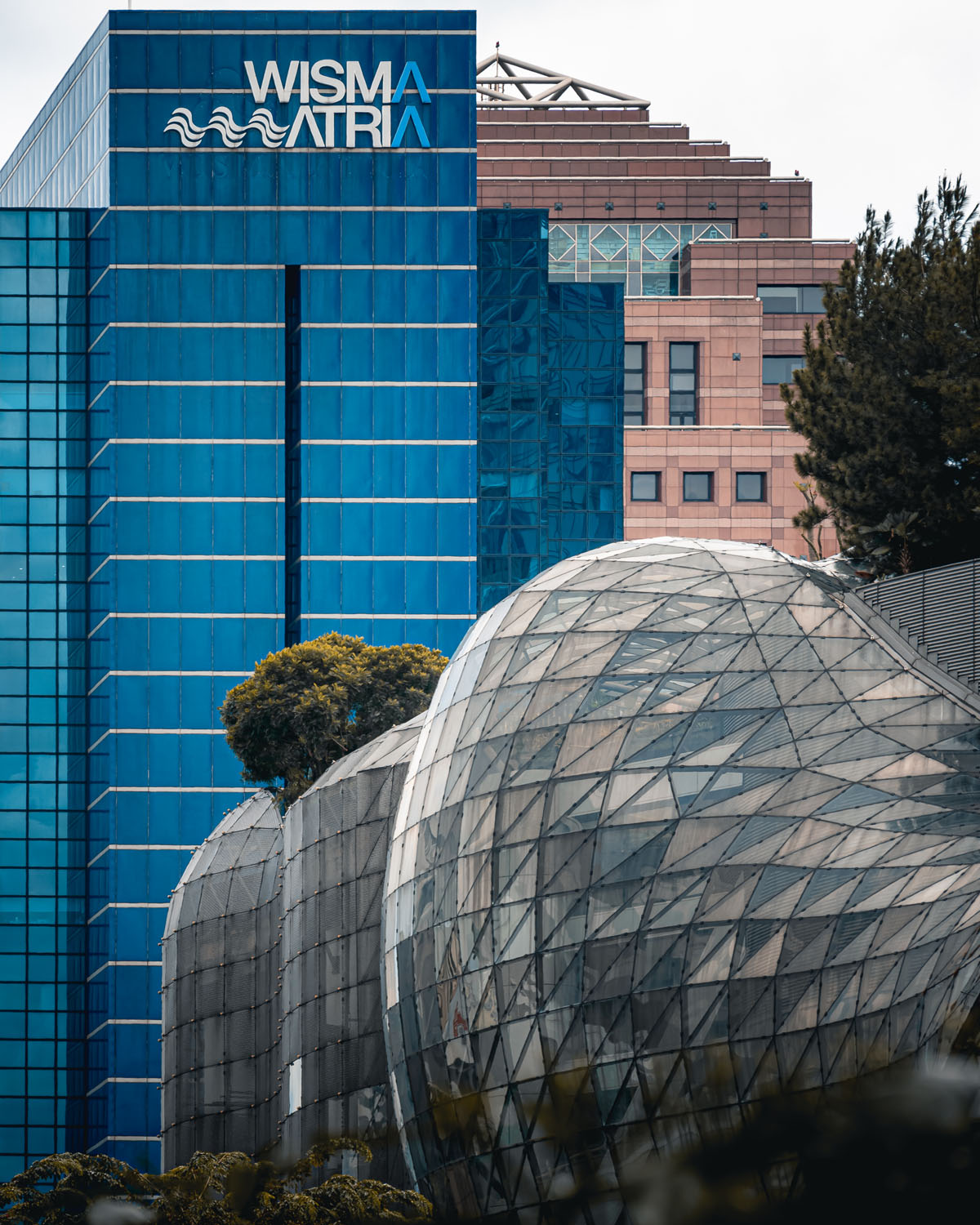
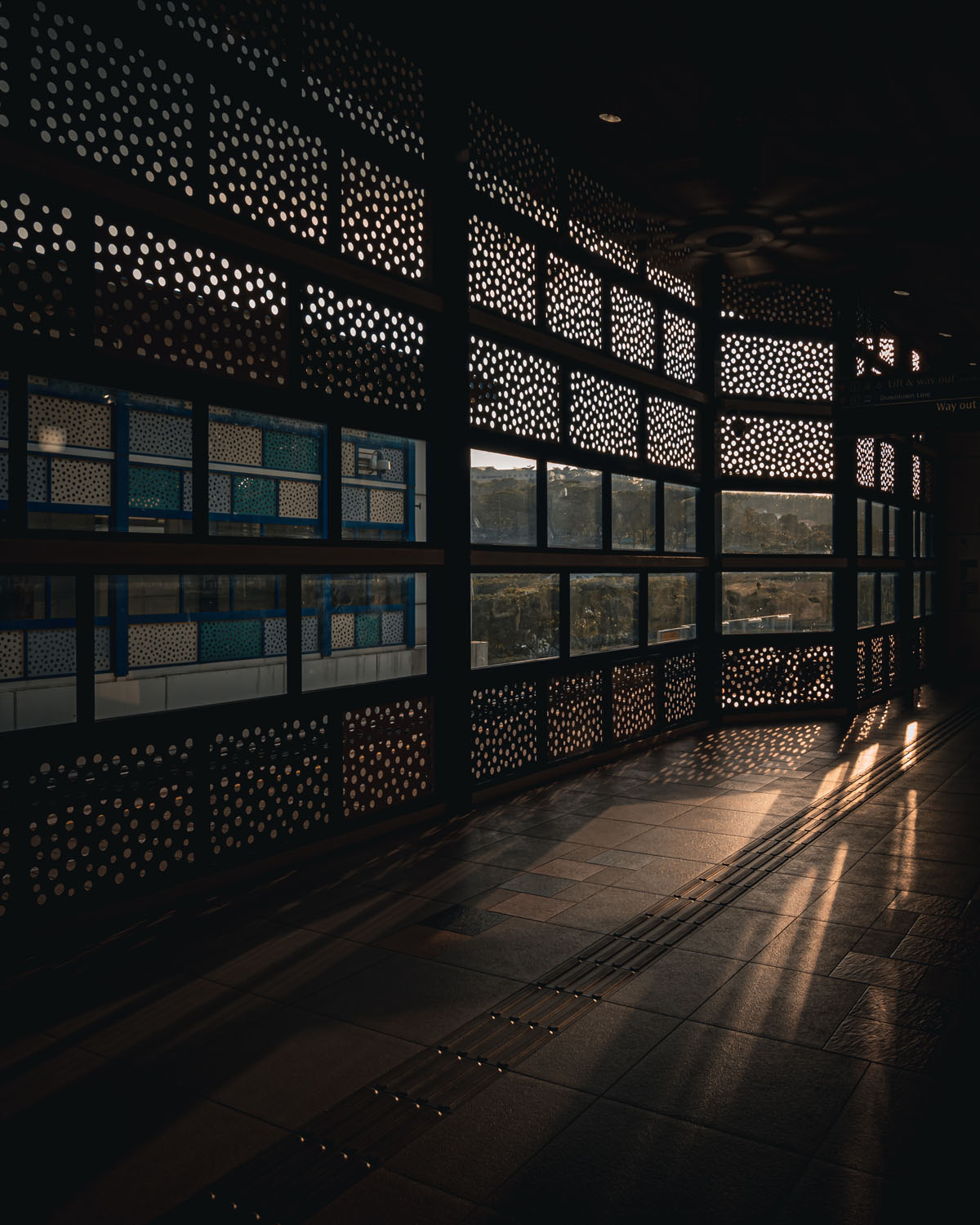
RIGHT: Olympus E-M5 MK II . Olympus M.Zuiko 12-100mmF4.0 @12mm . F/10 . 1/40” . ISO 100
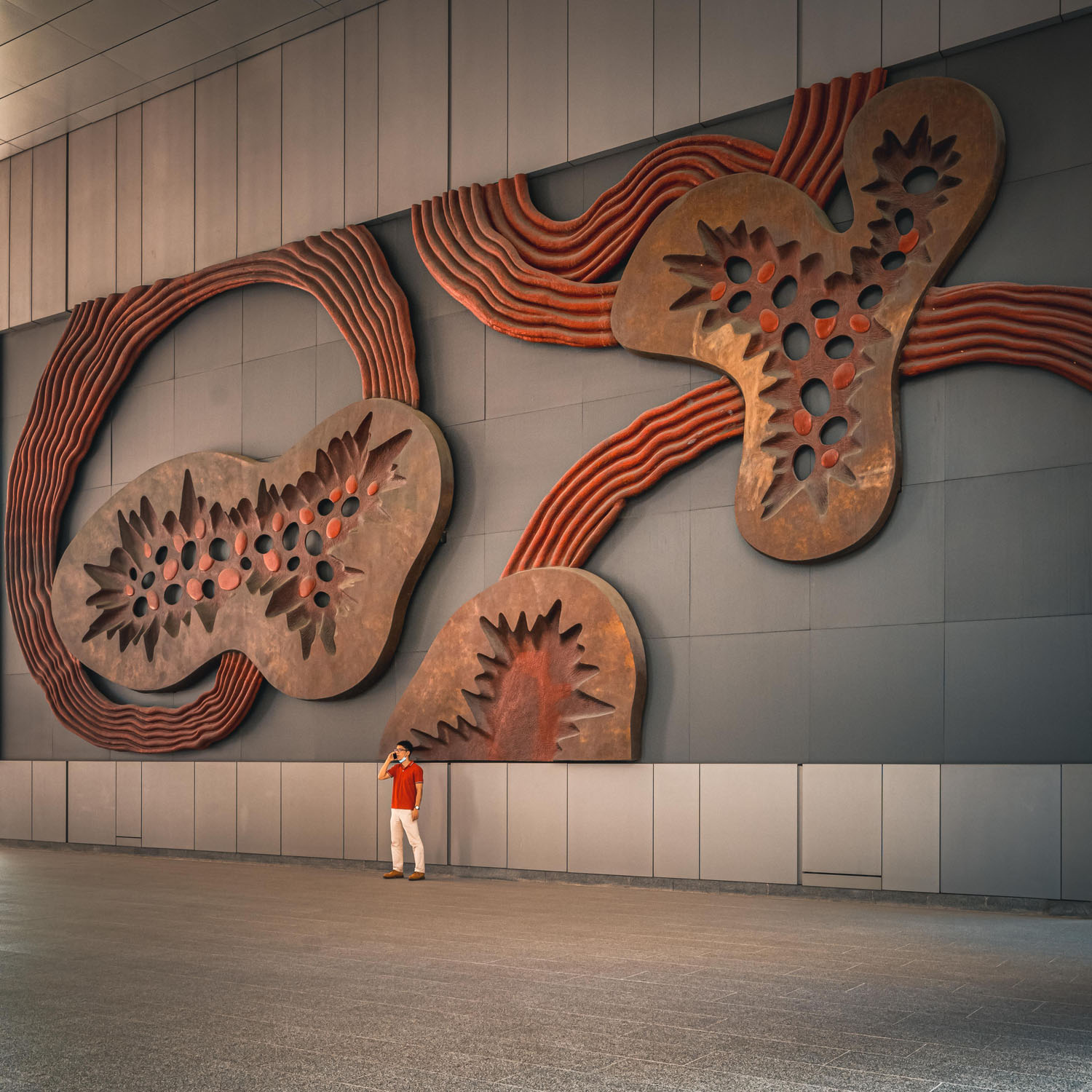
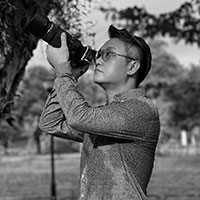
Victor Zhuo is a photography enthusiast living in Singapore, working in the semiconductor research field. Through his images, Victor hopes to spread the joy and love of photography and to motivate his viewers to go out, shoot and publish photos as a creative expression or even cathartic release in today’s increasingly unpredictable and complex world.

